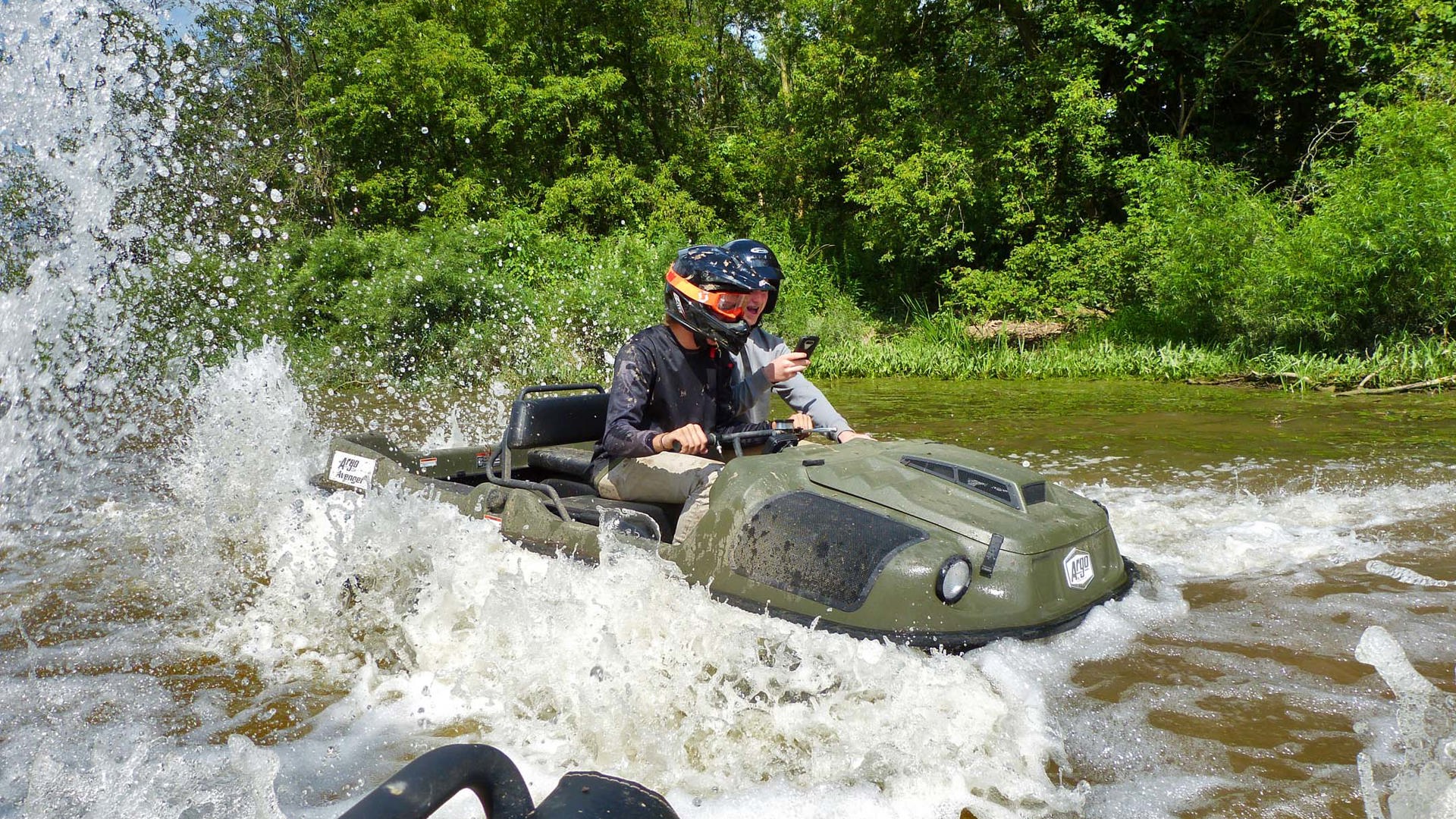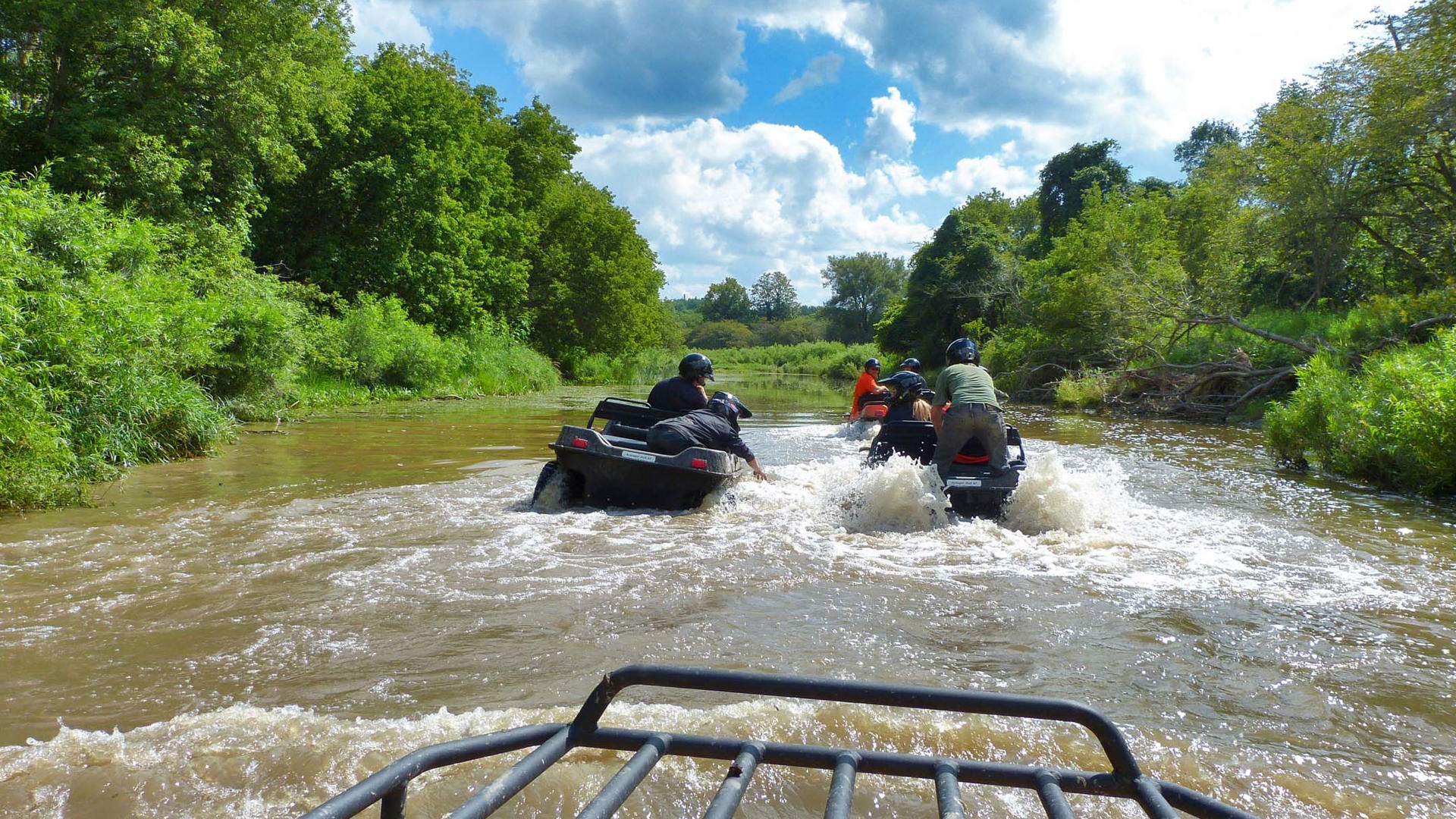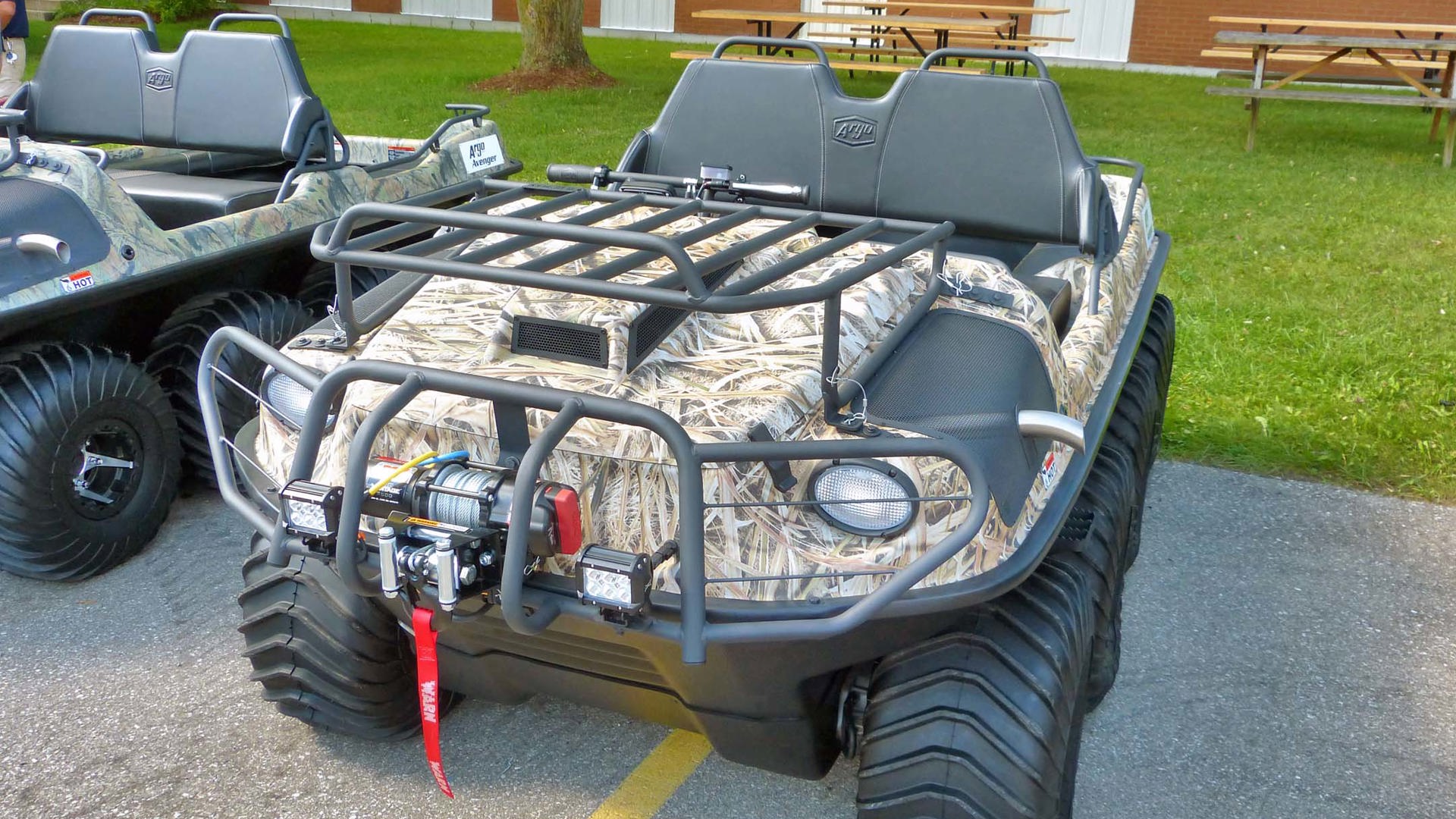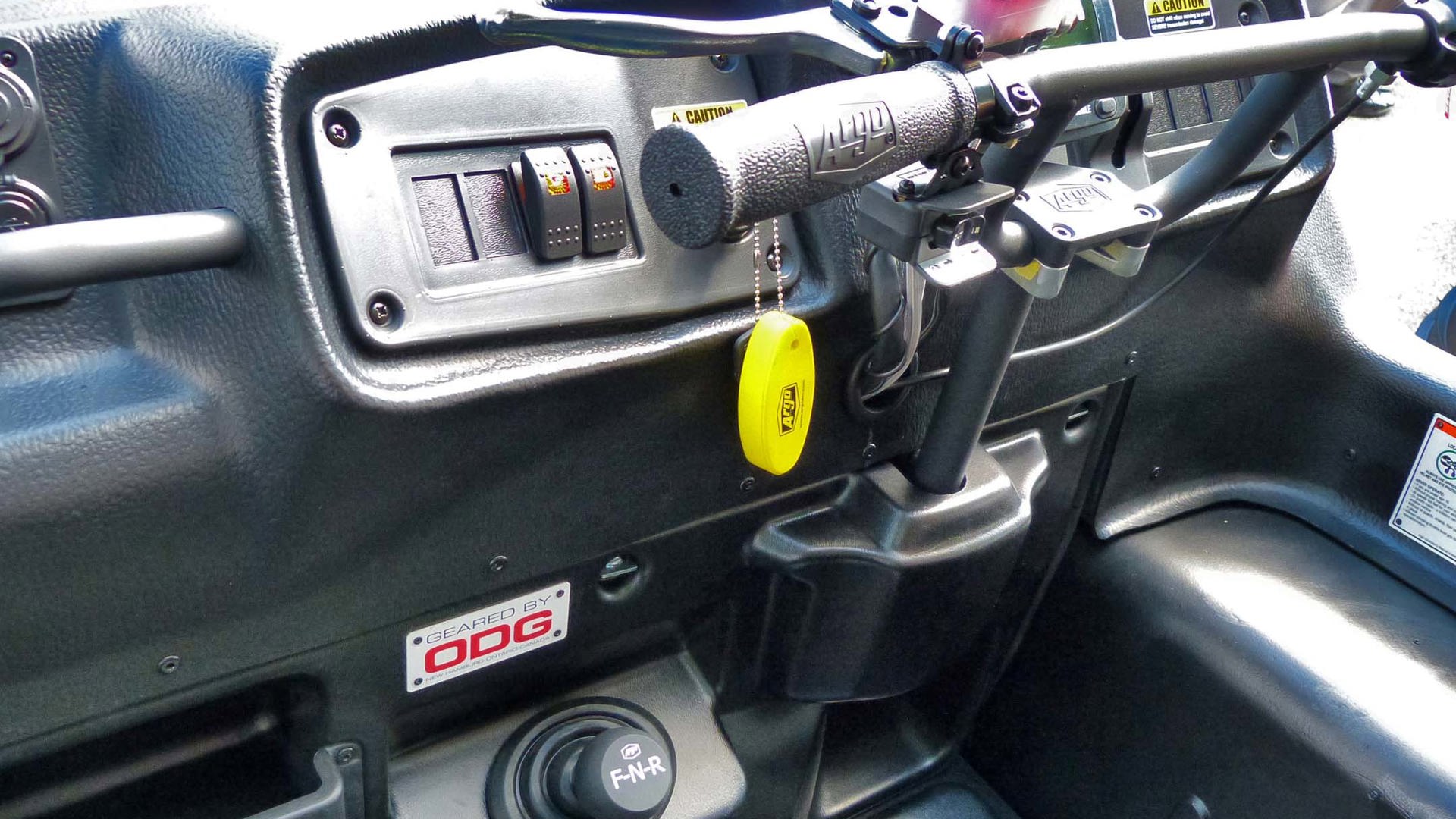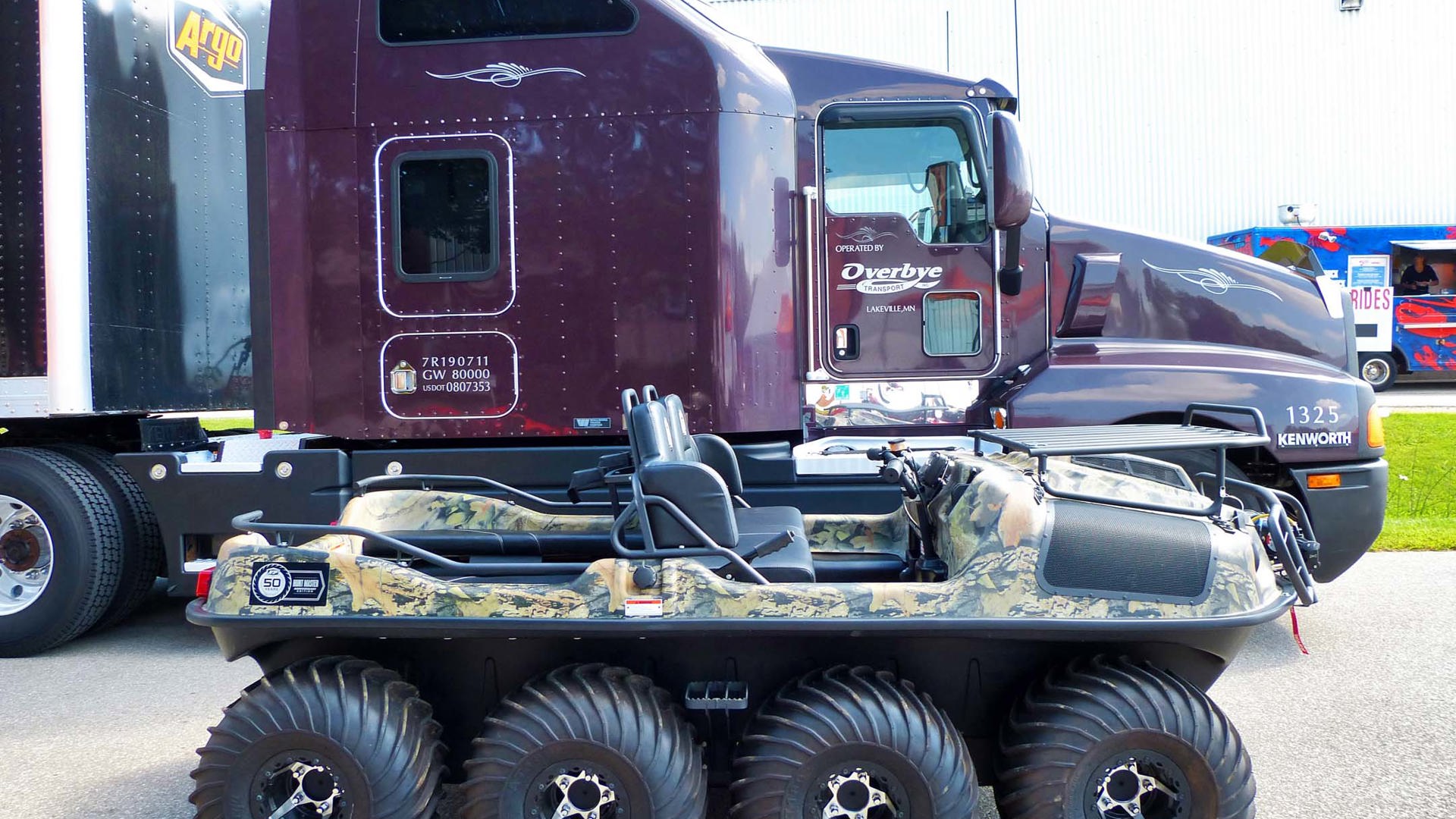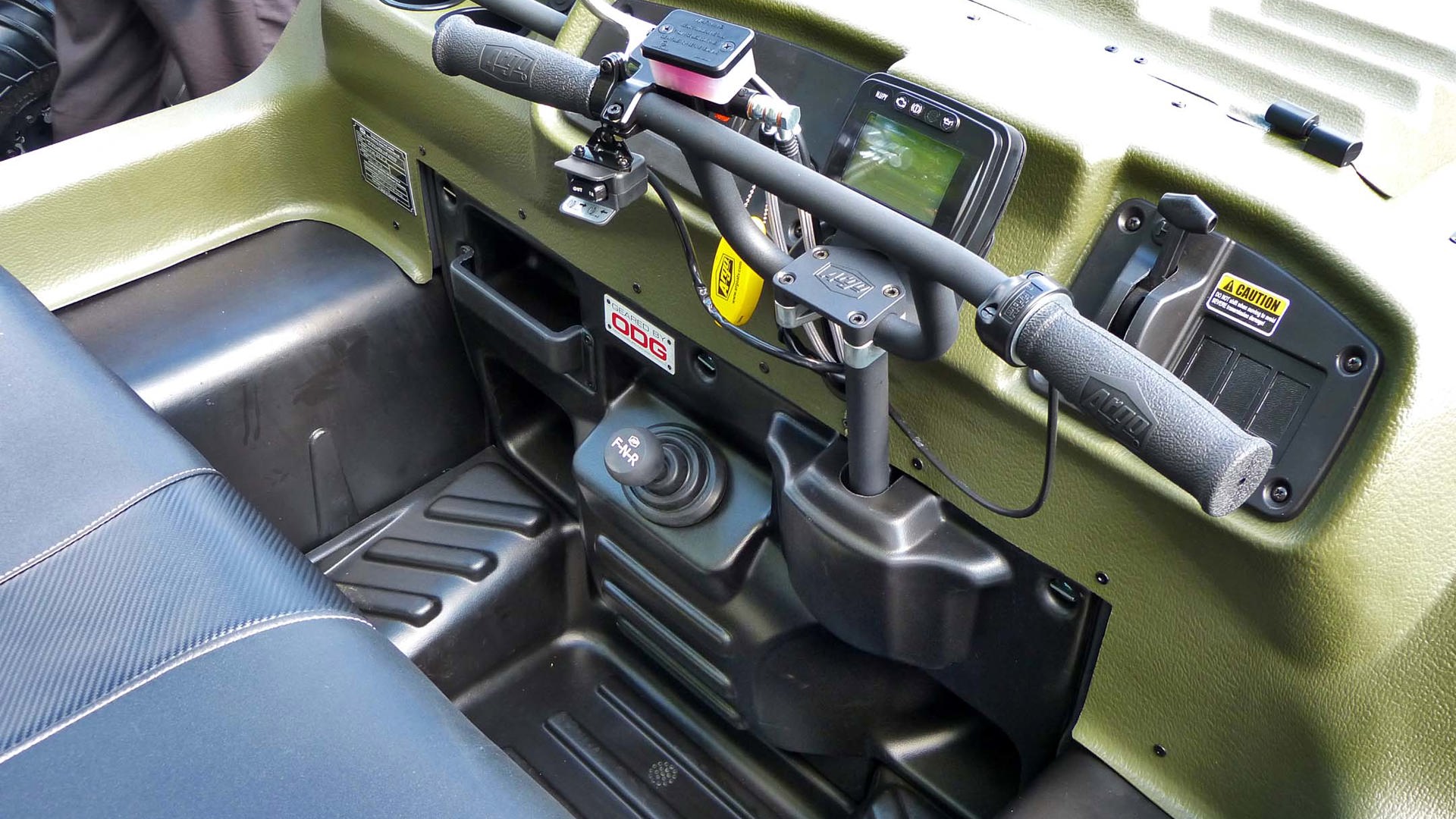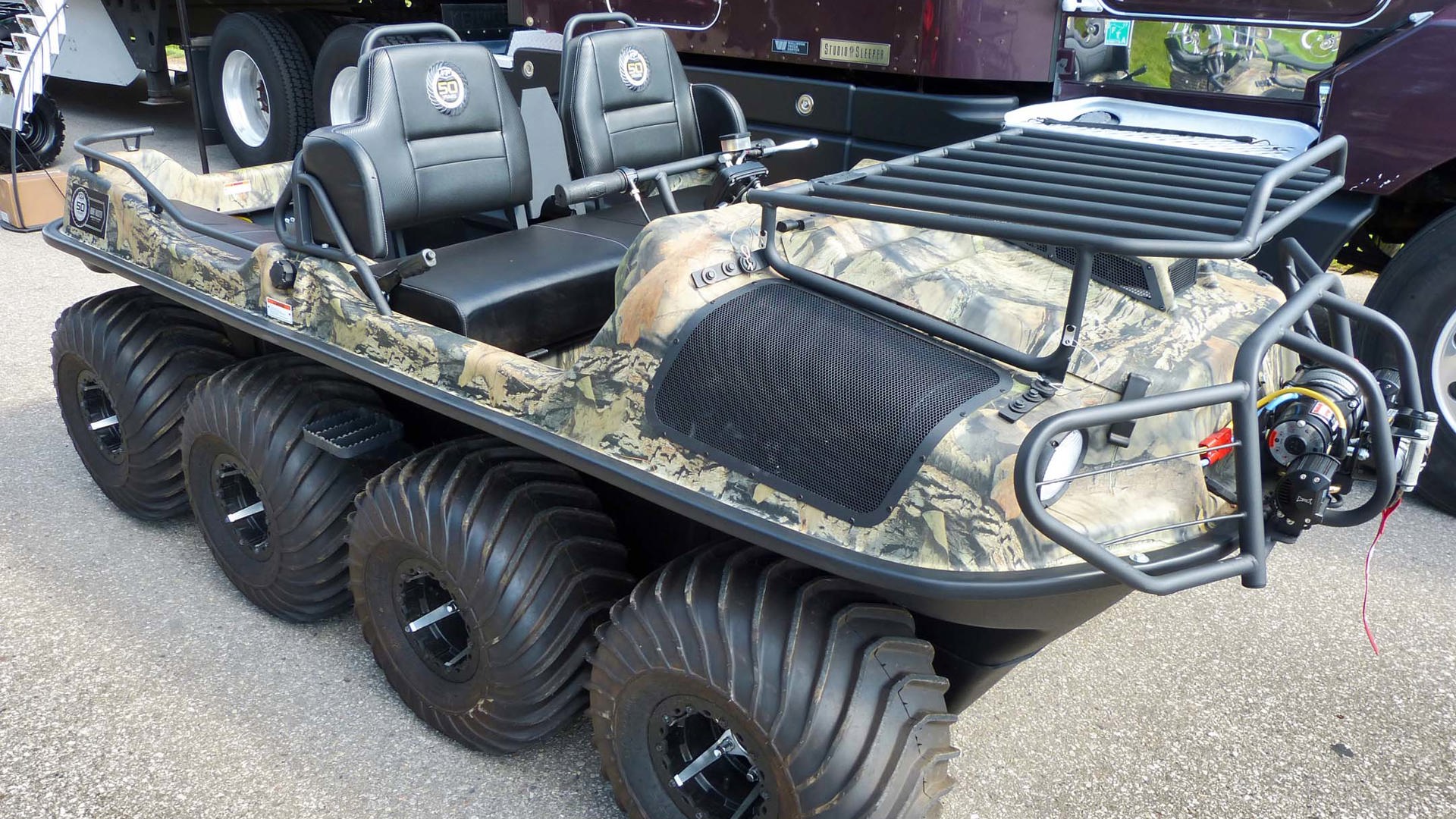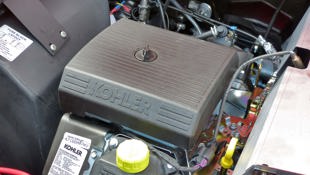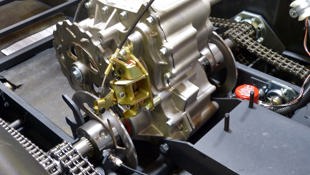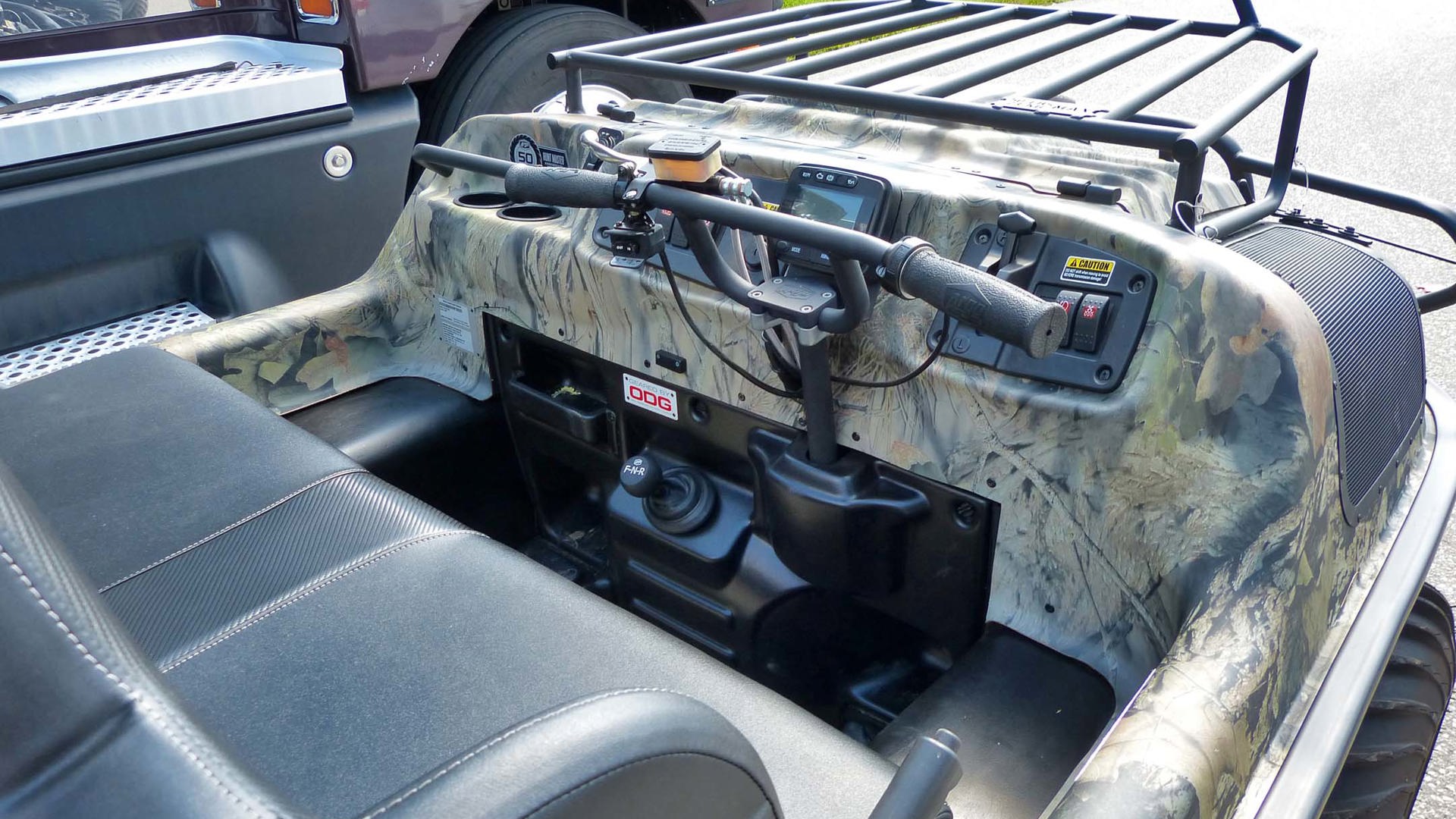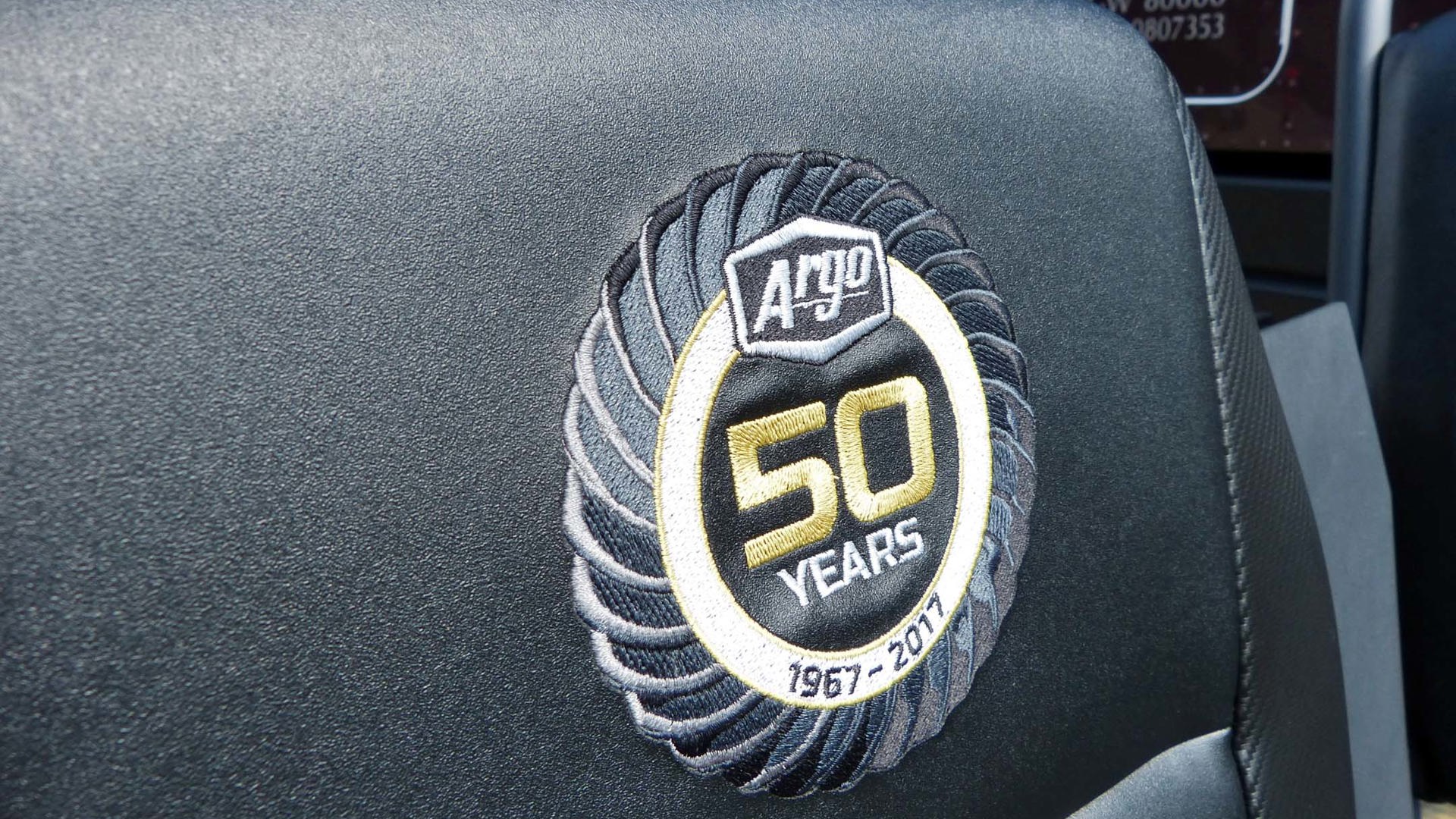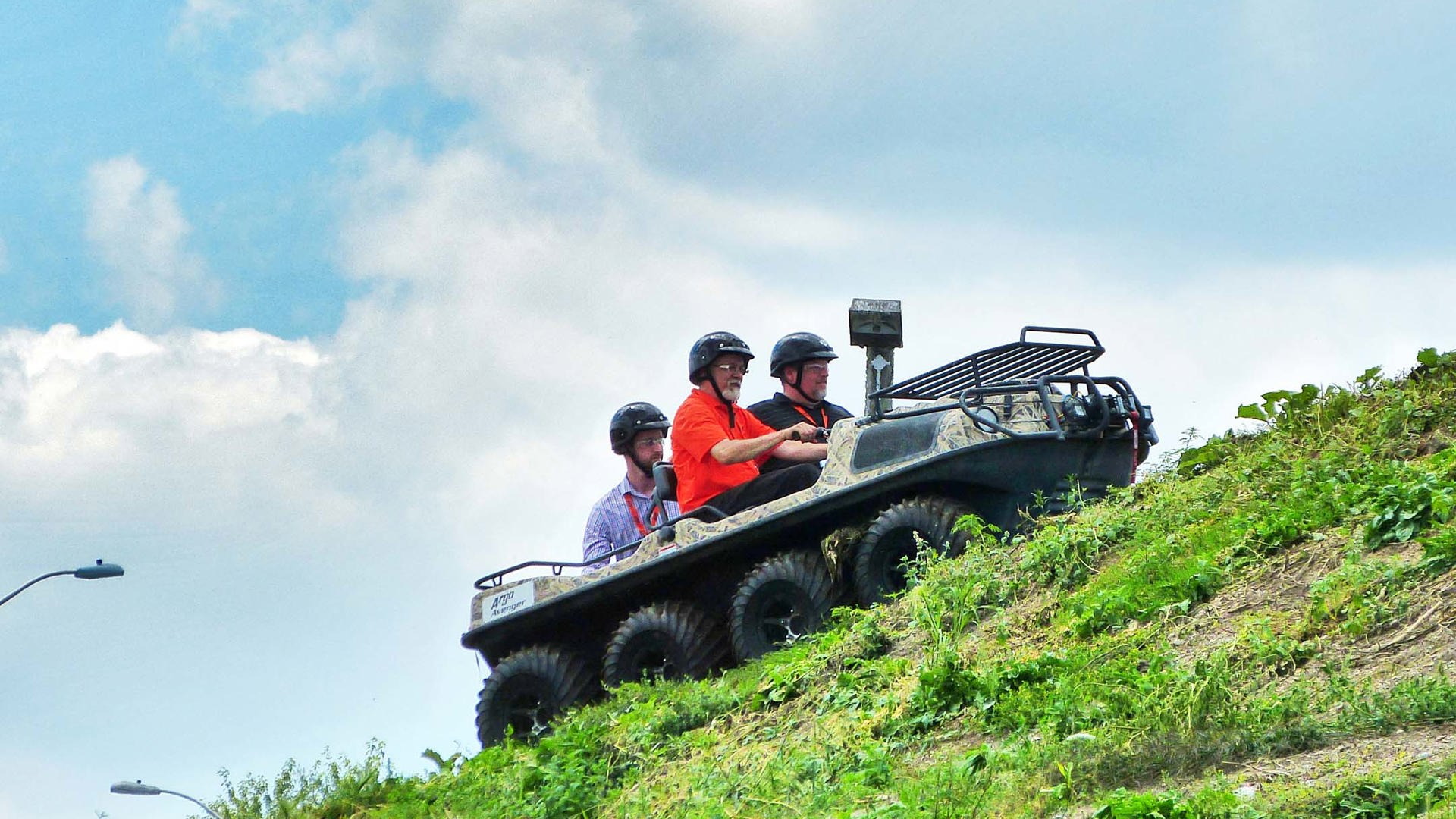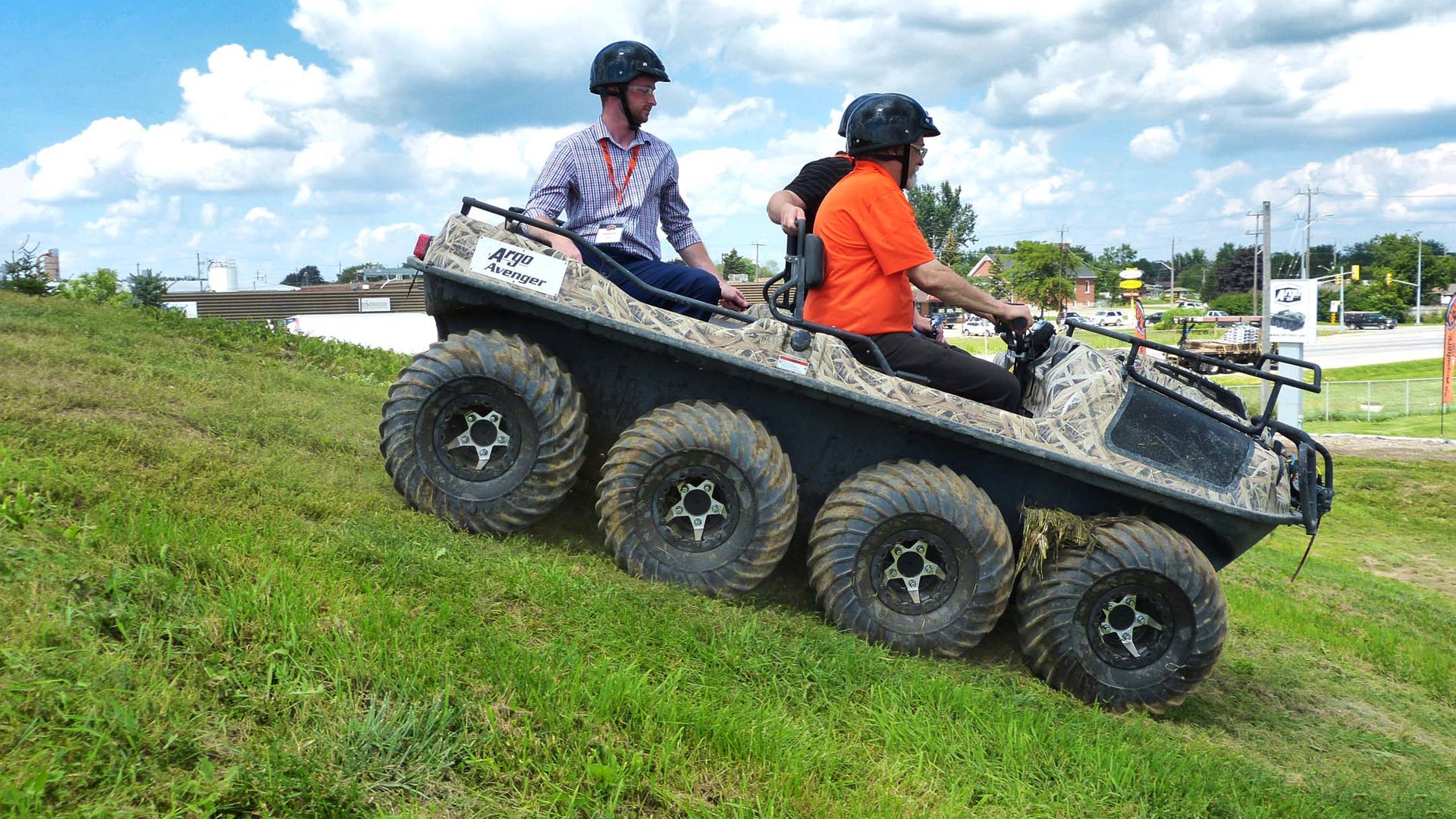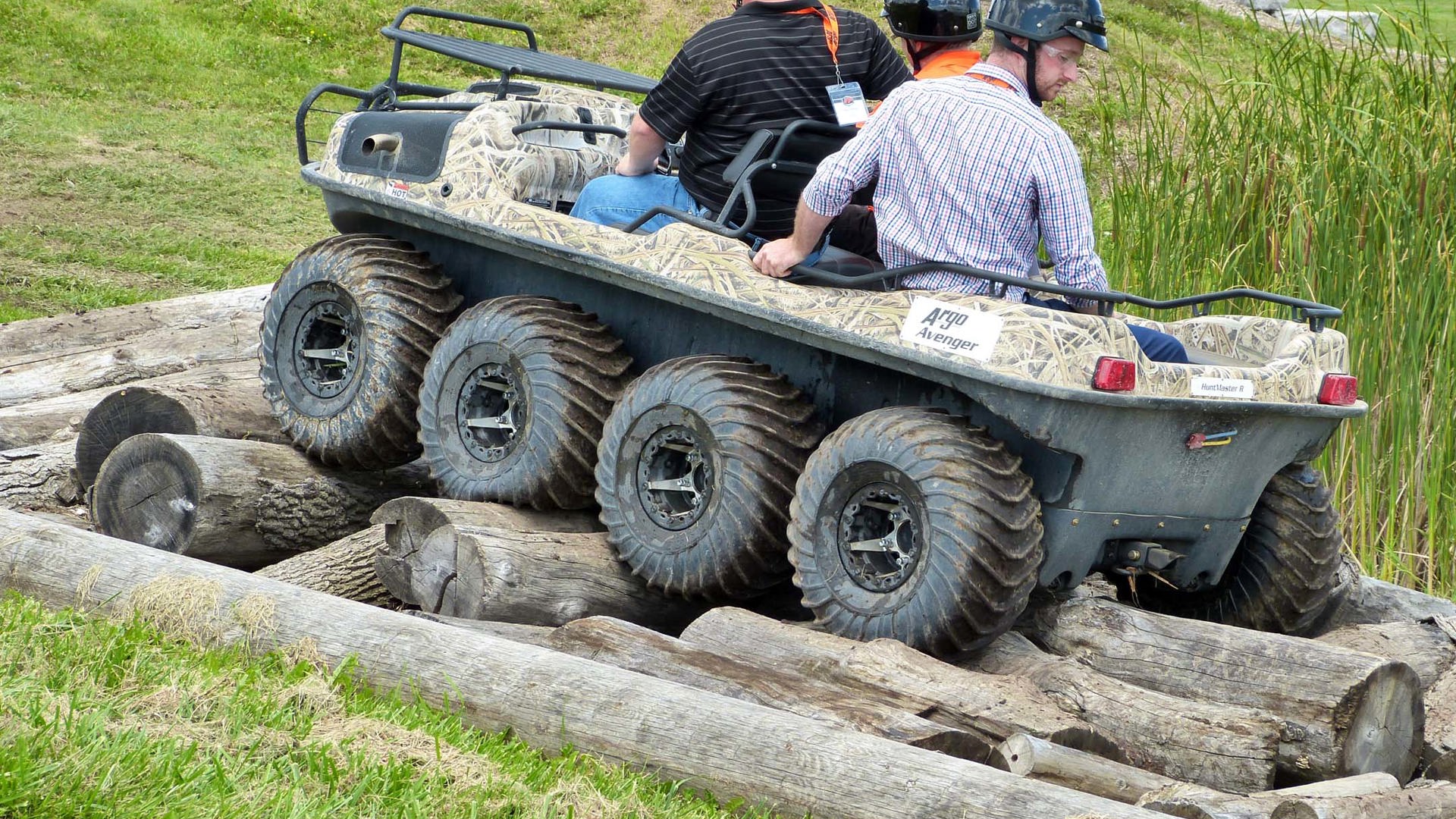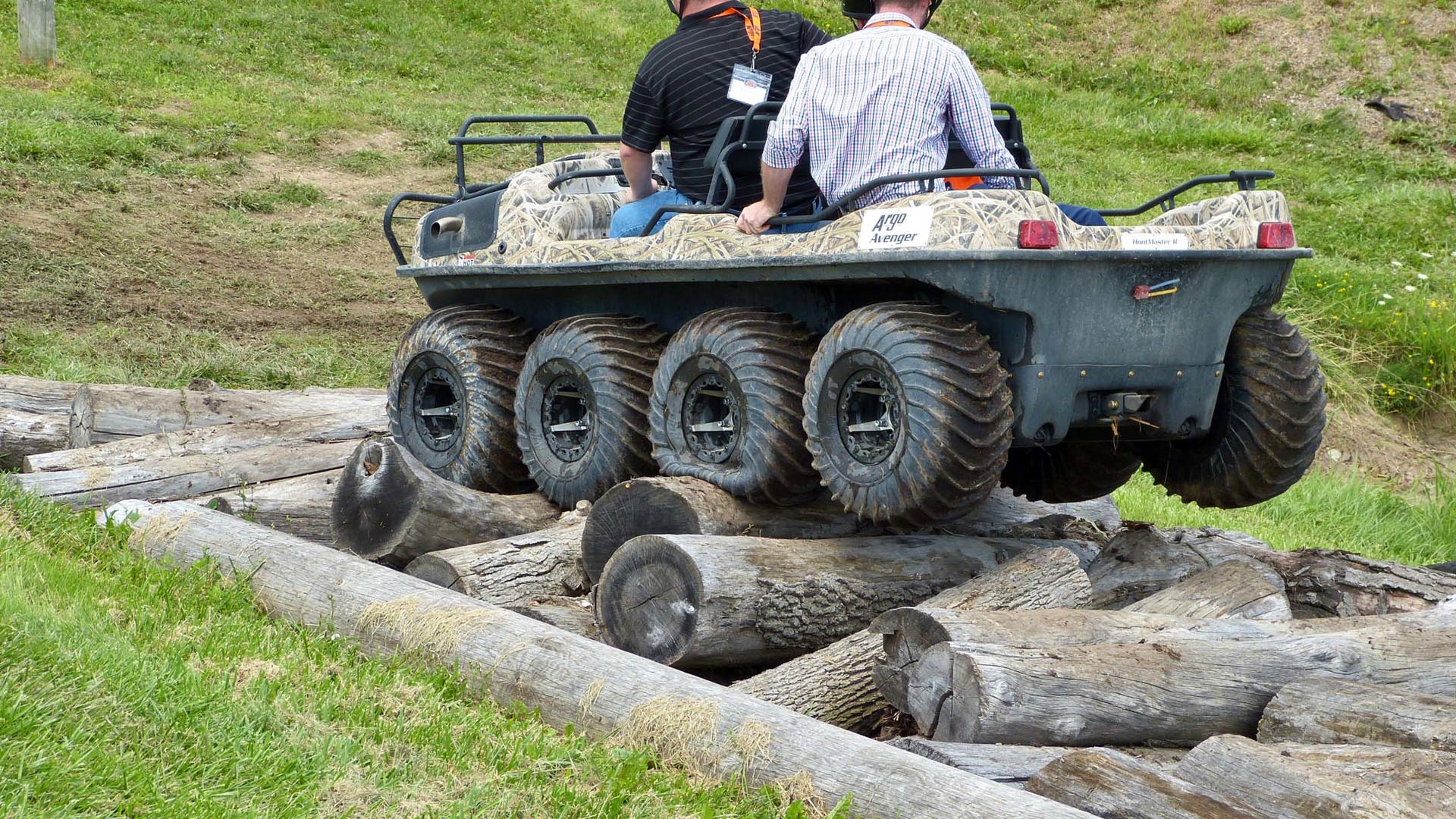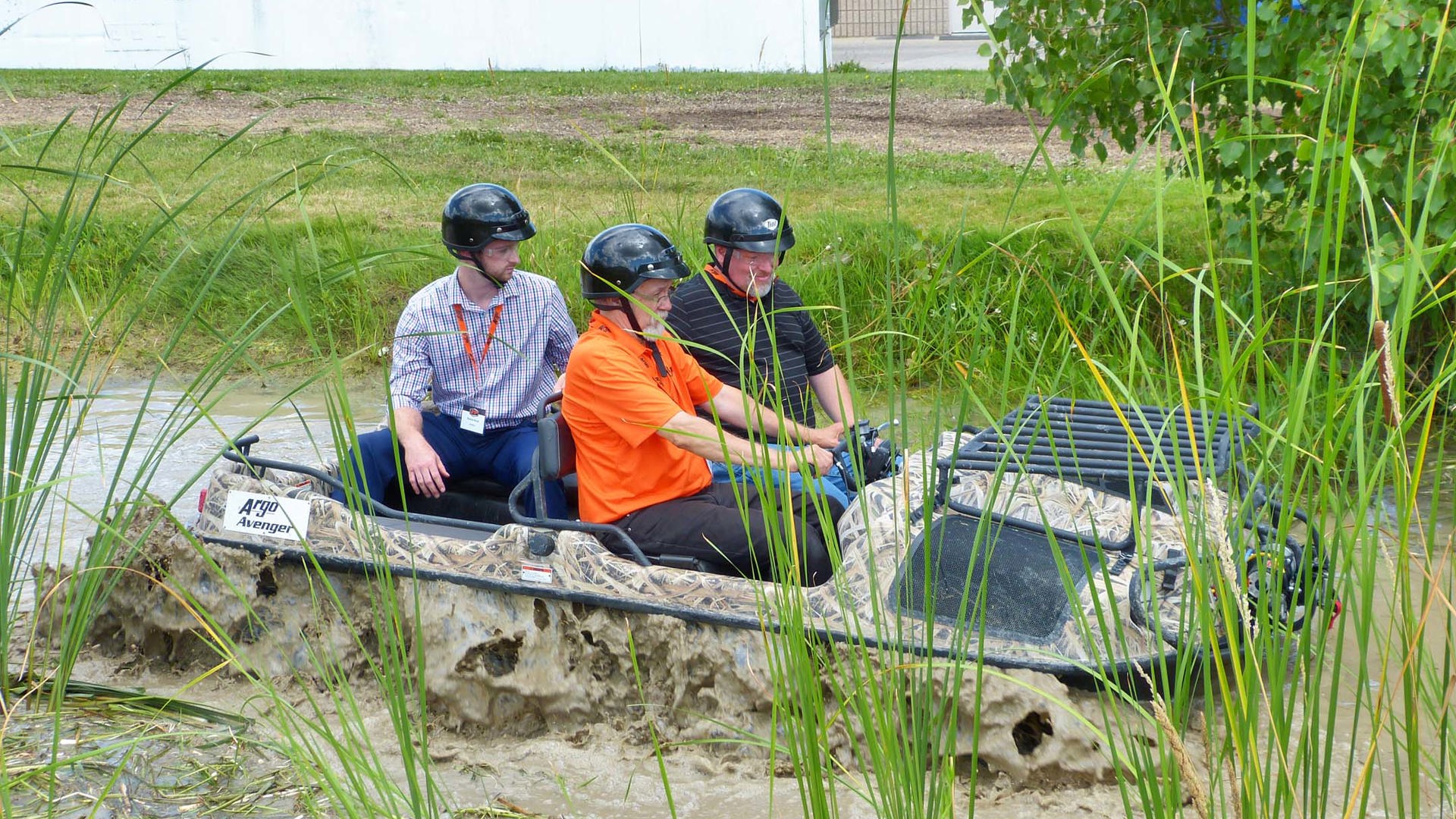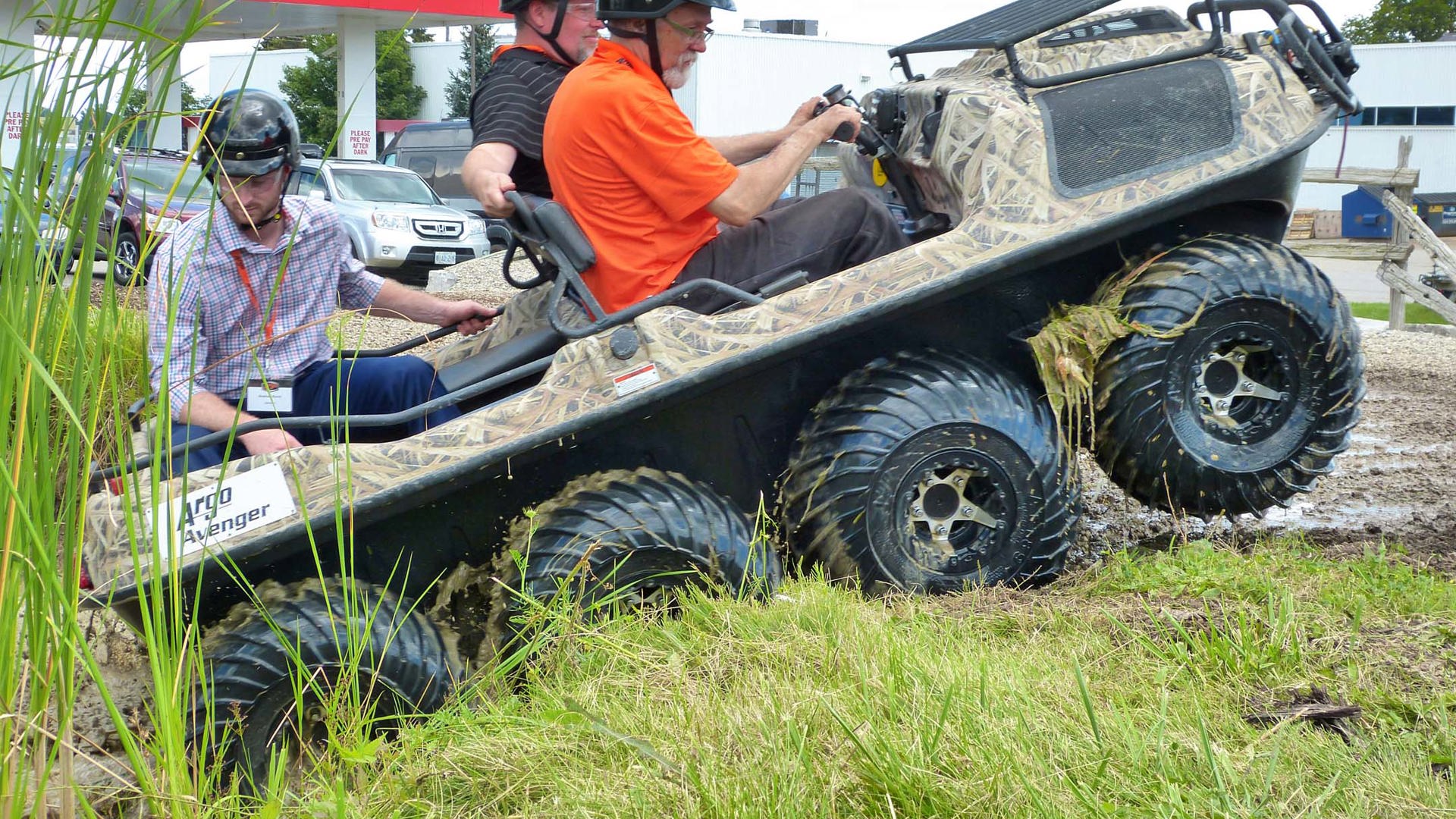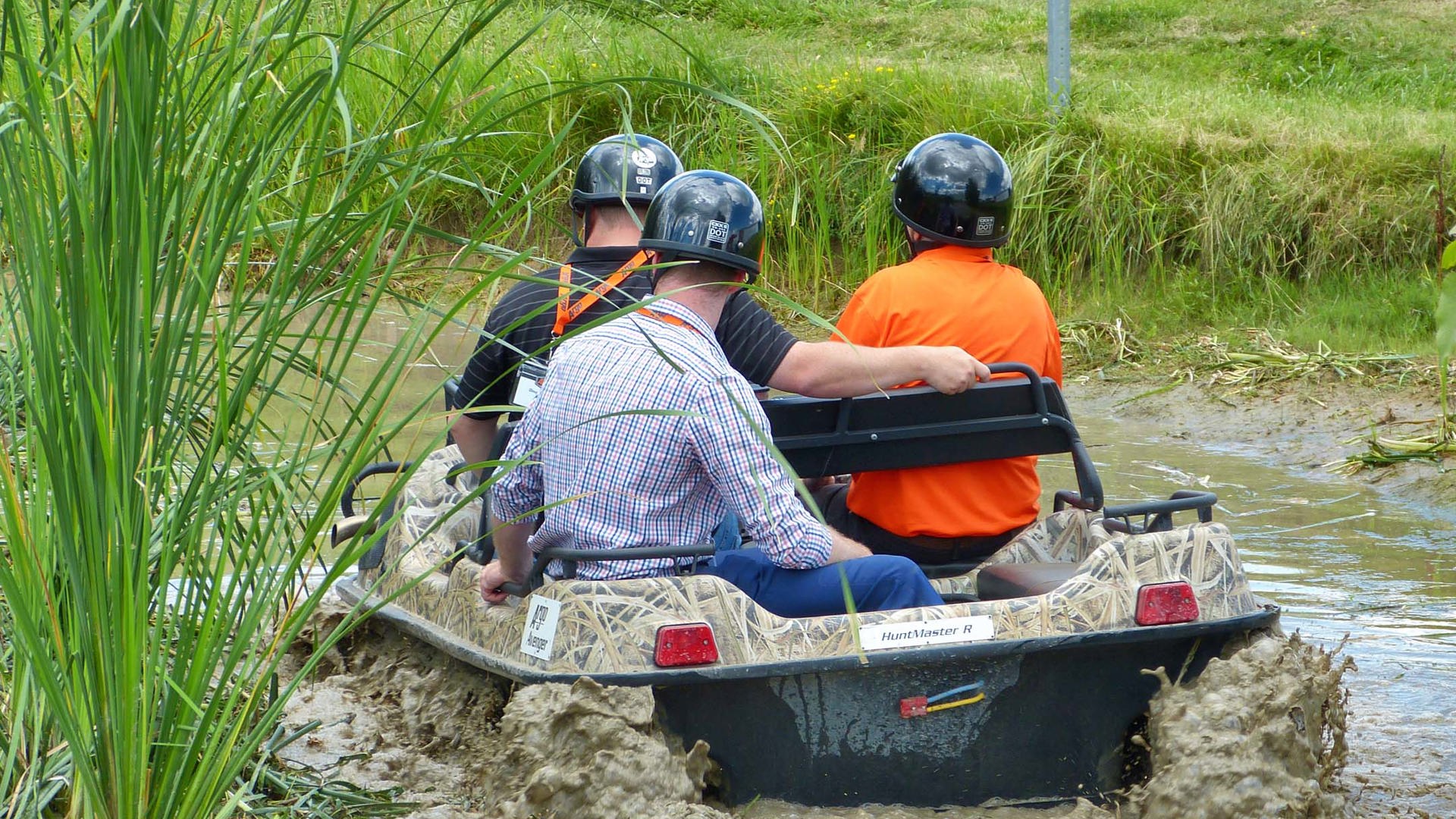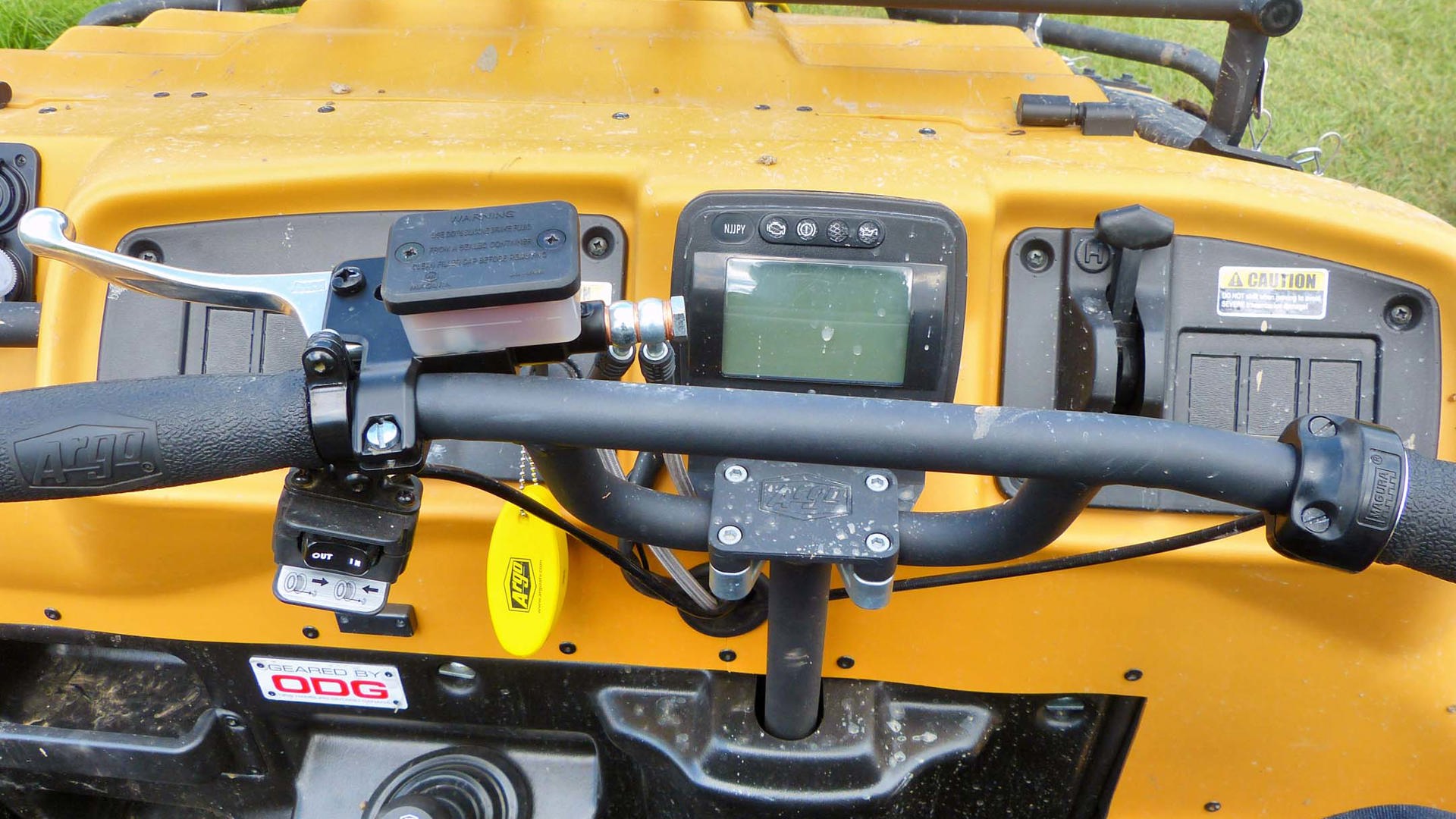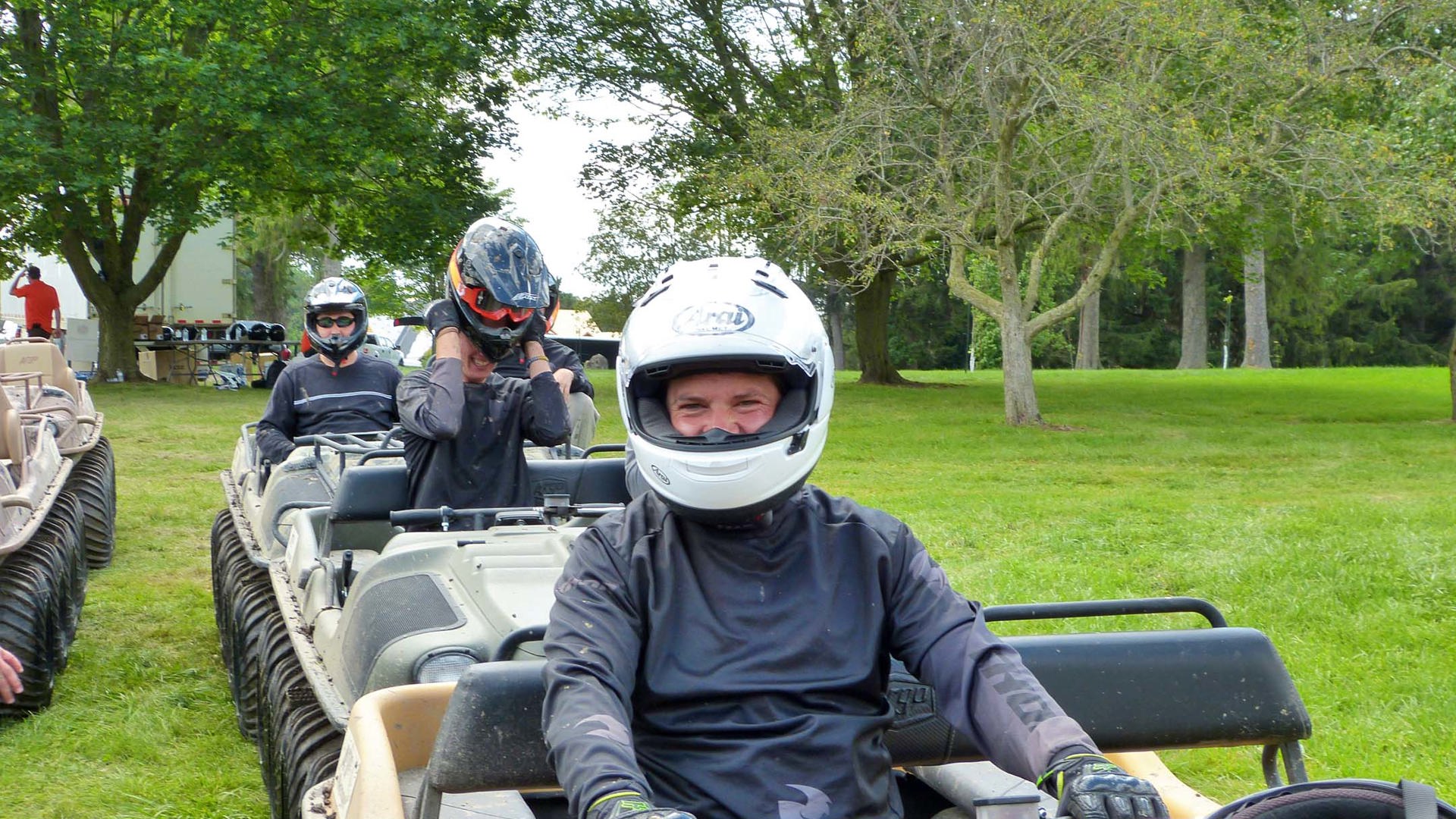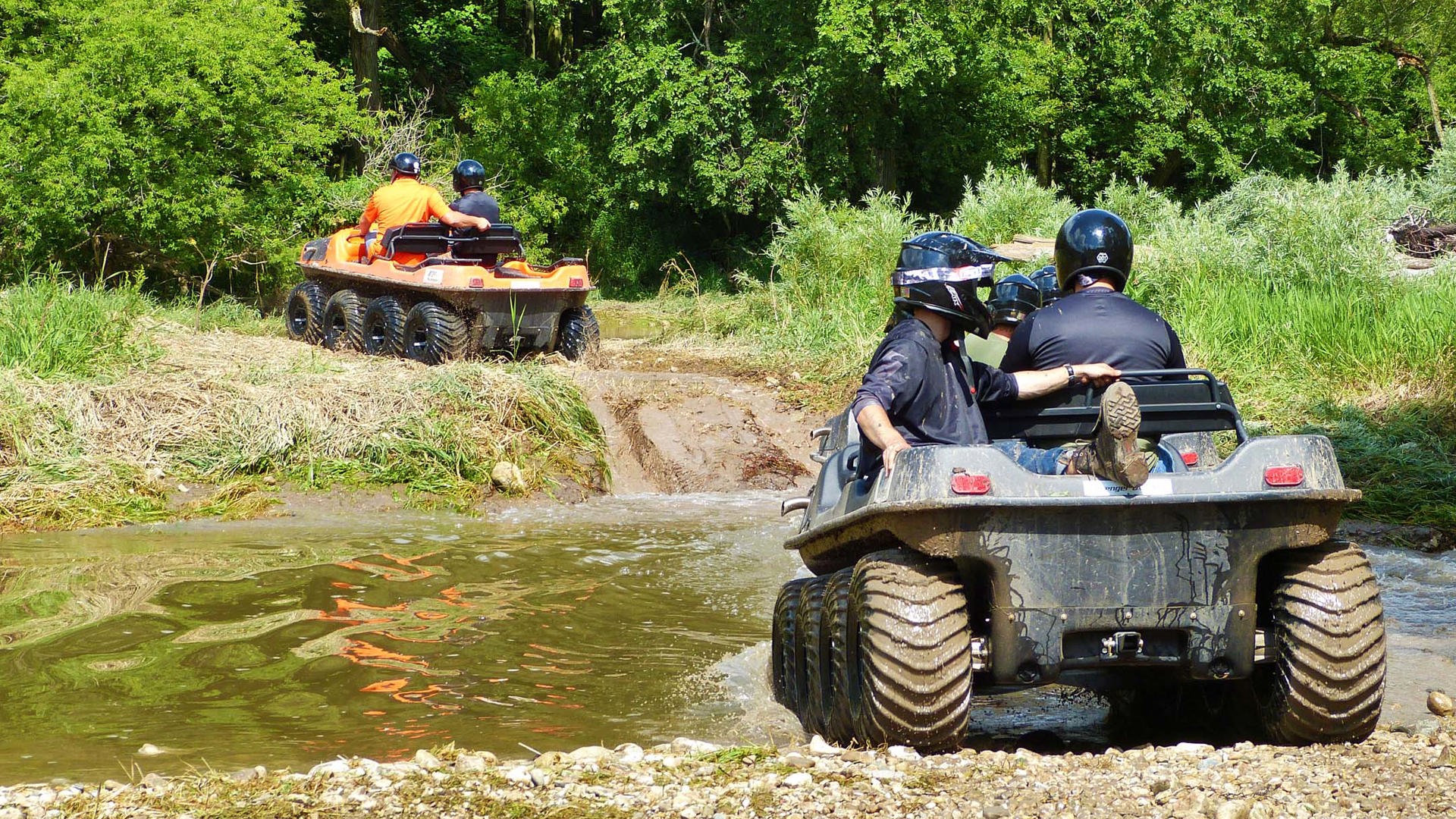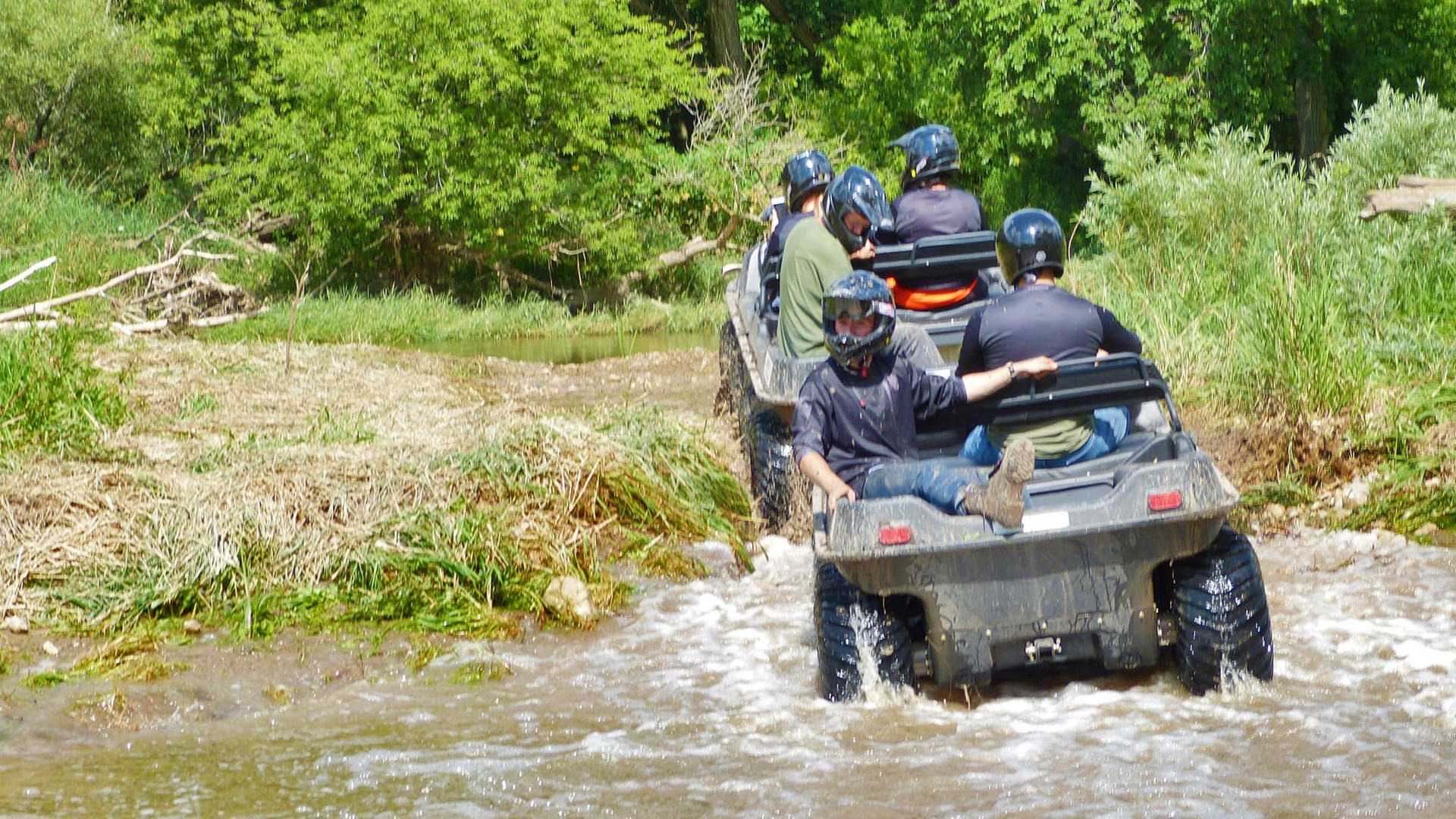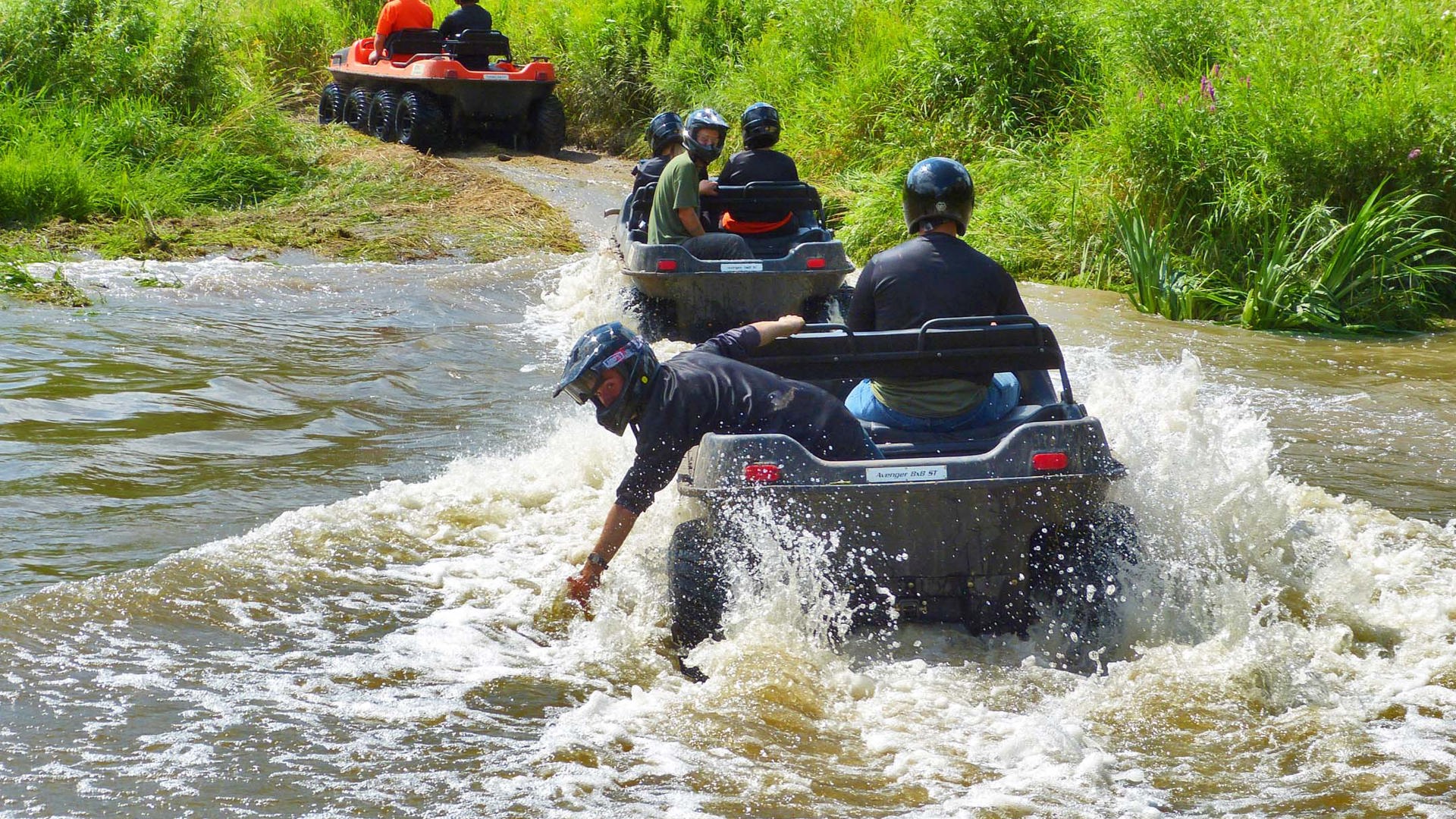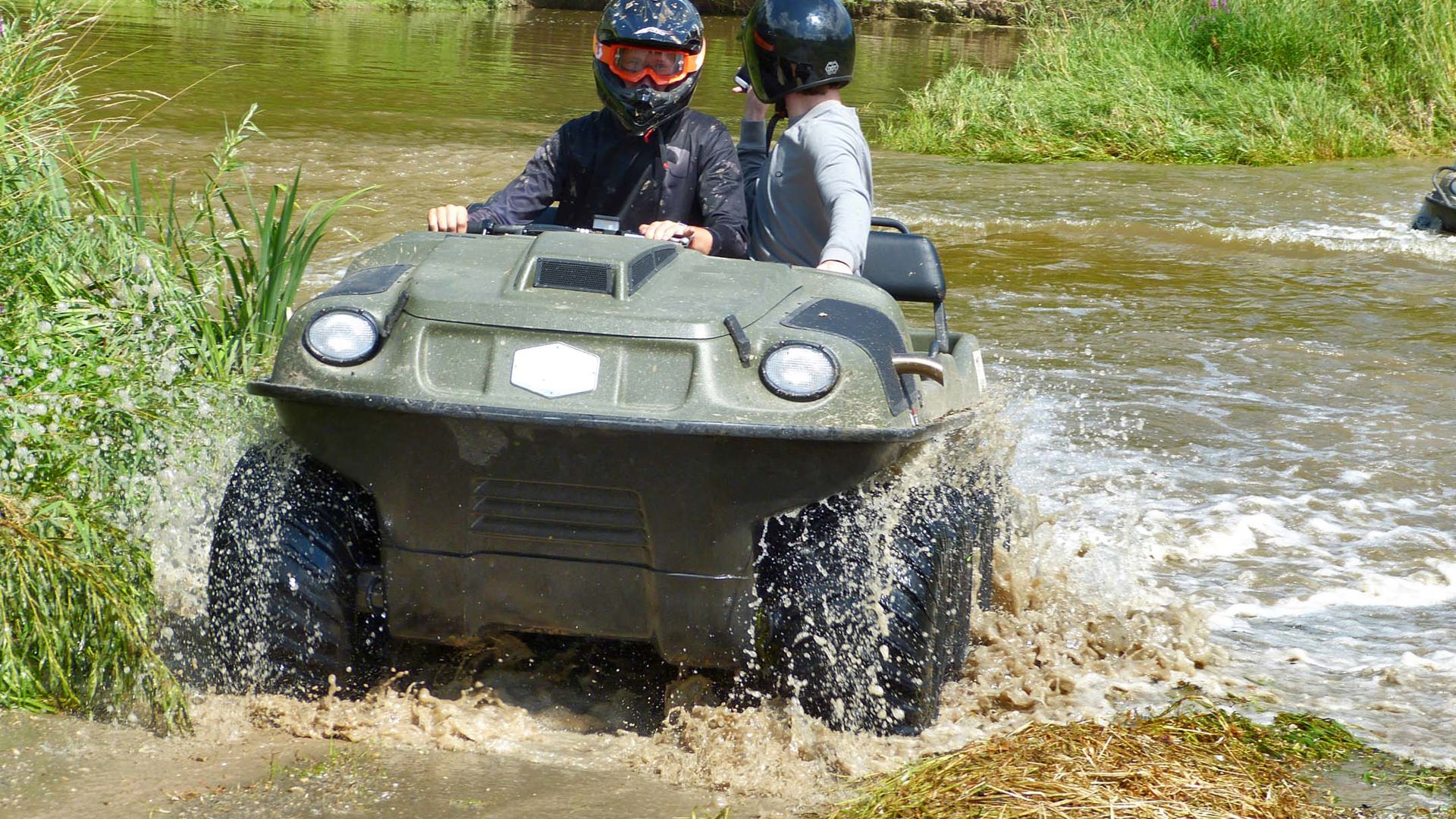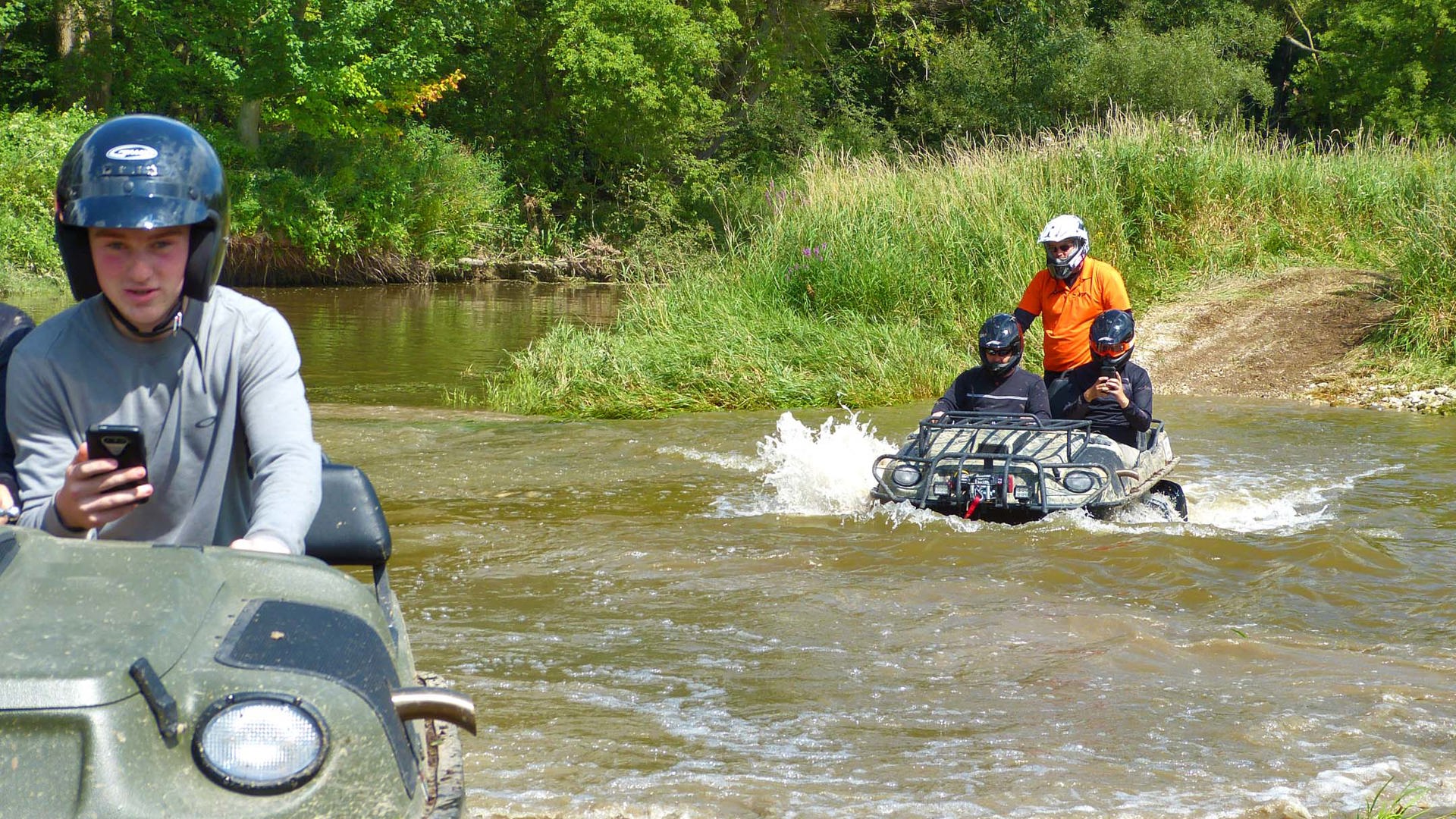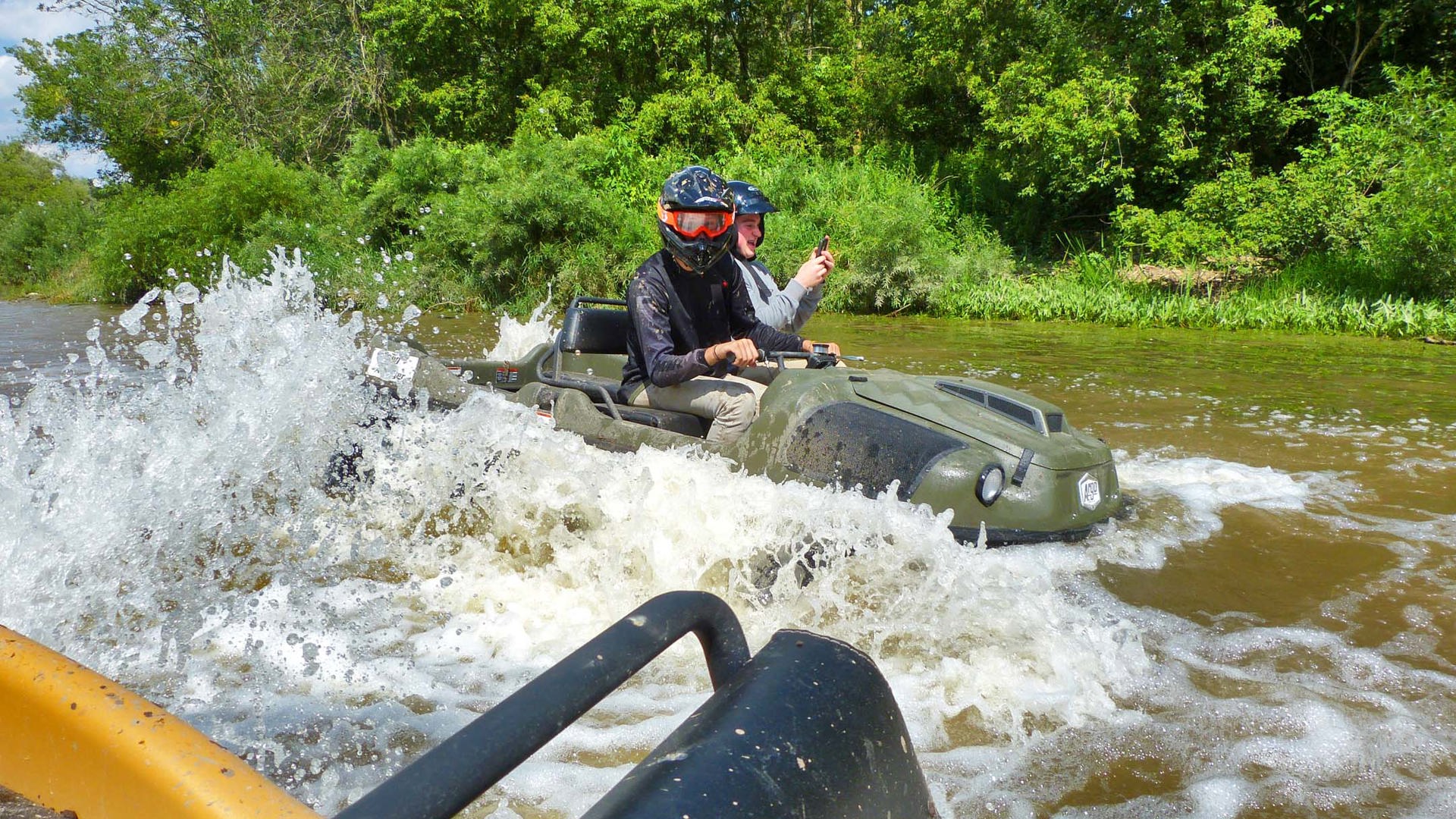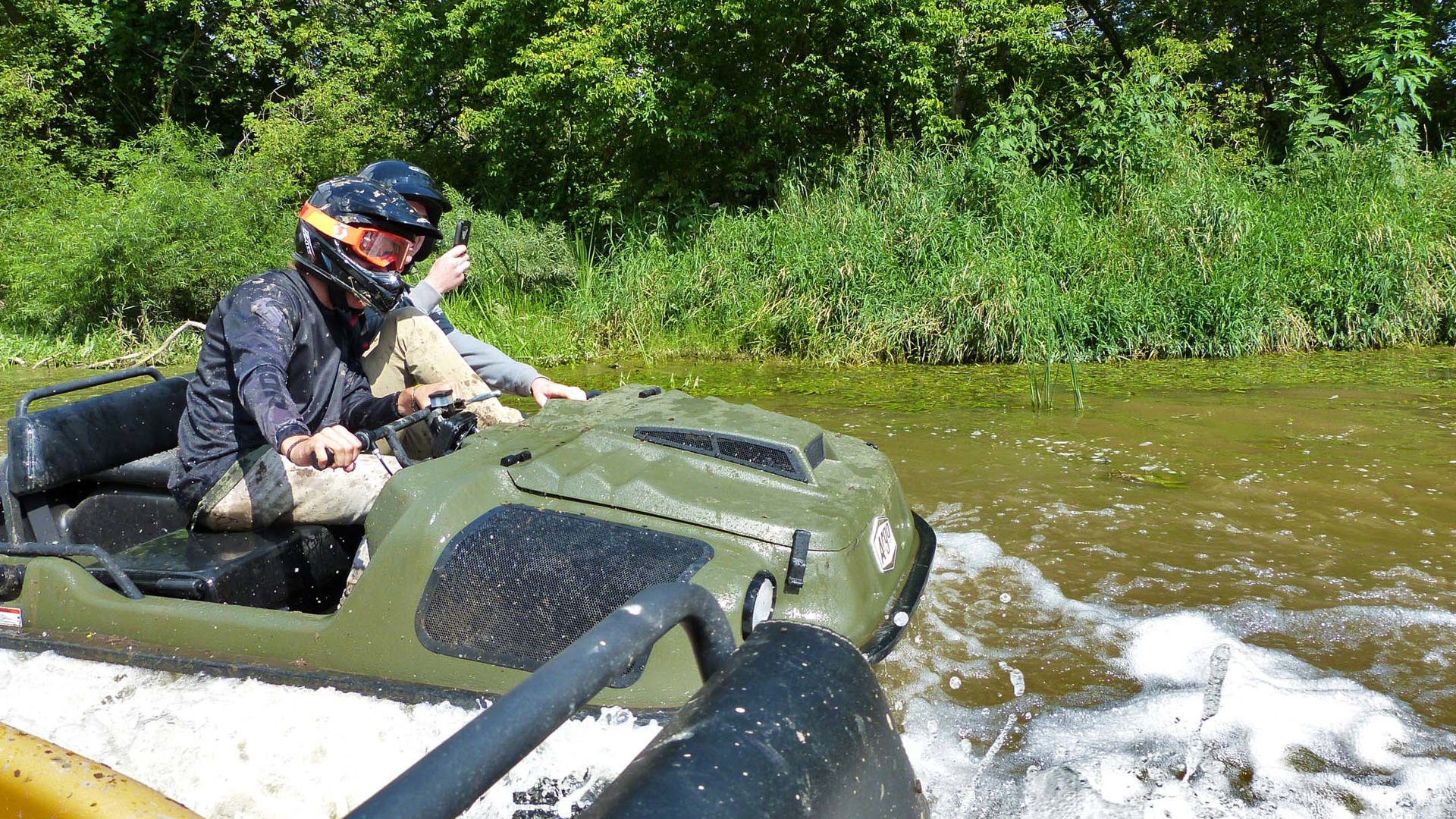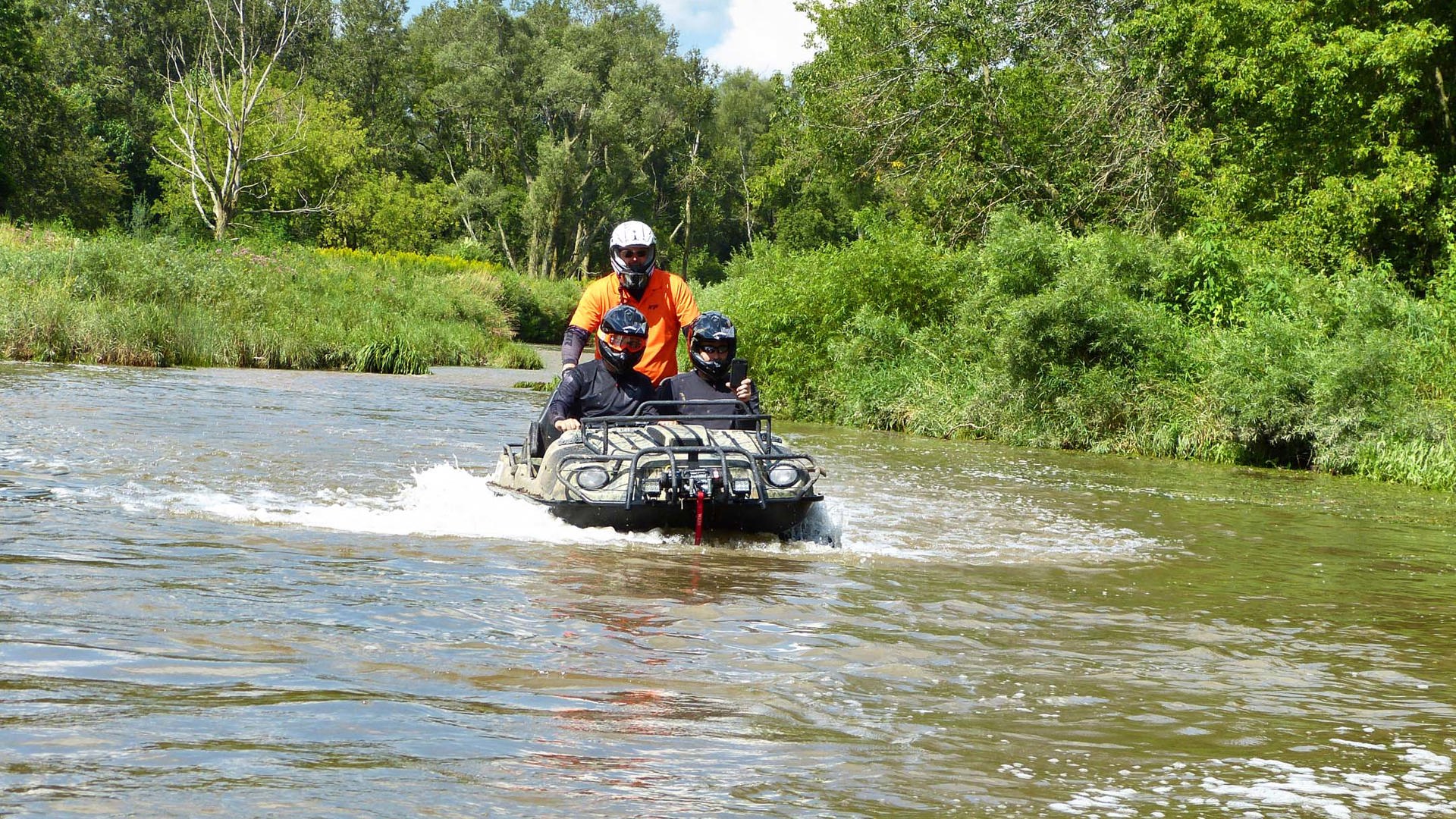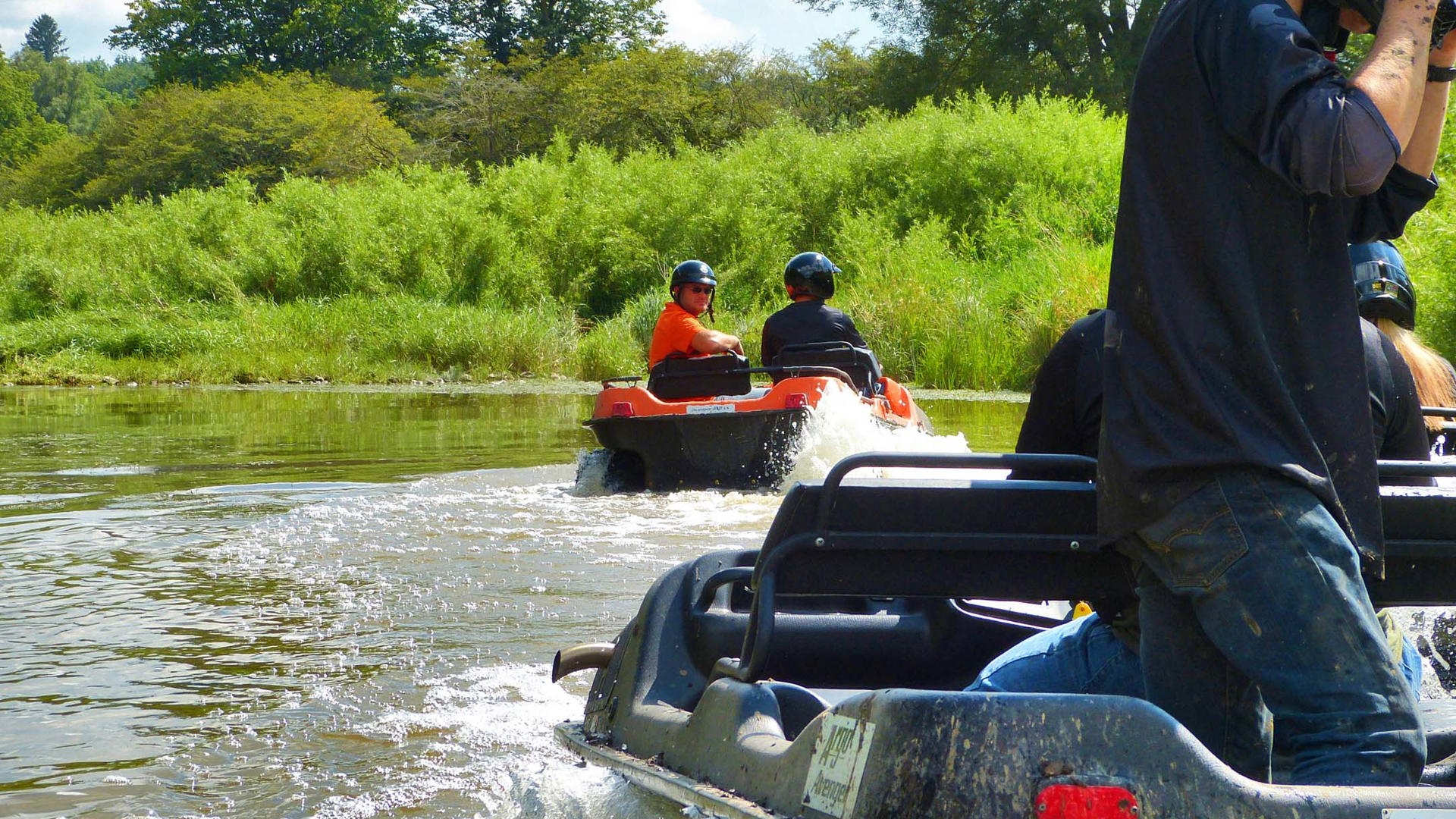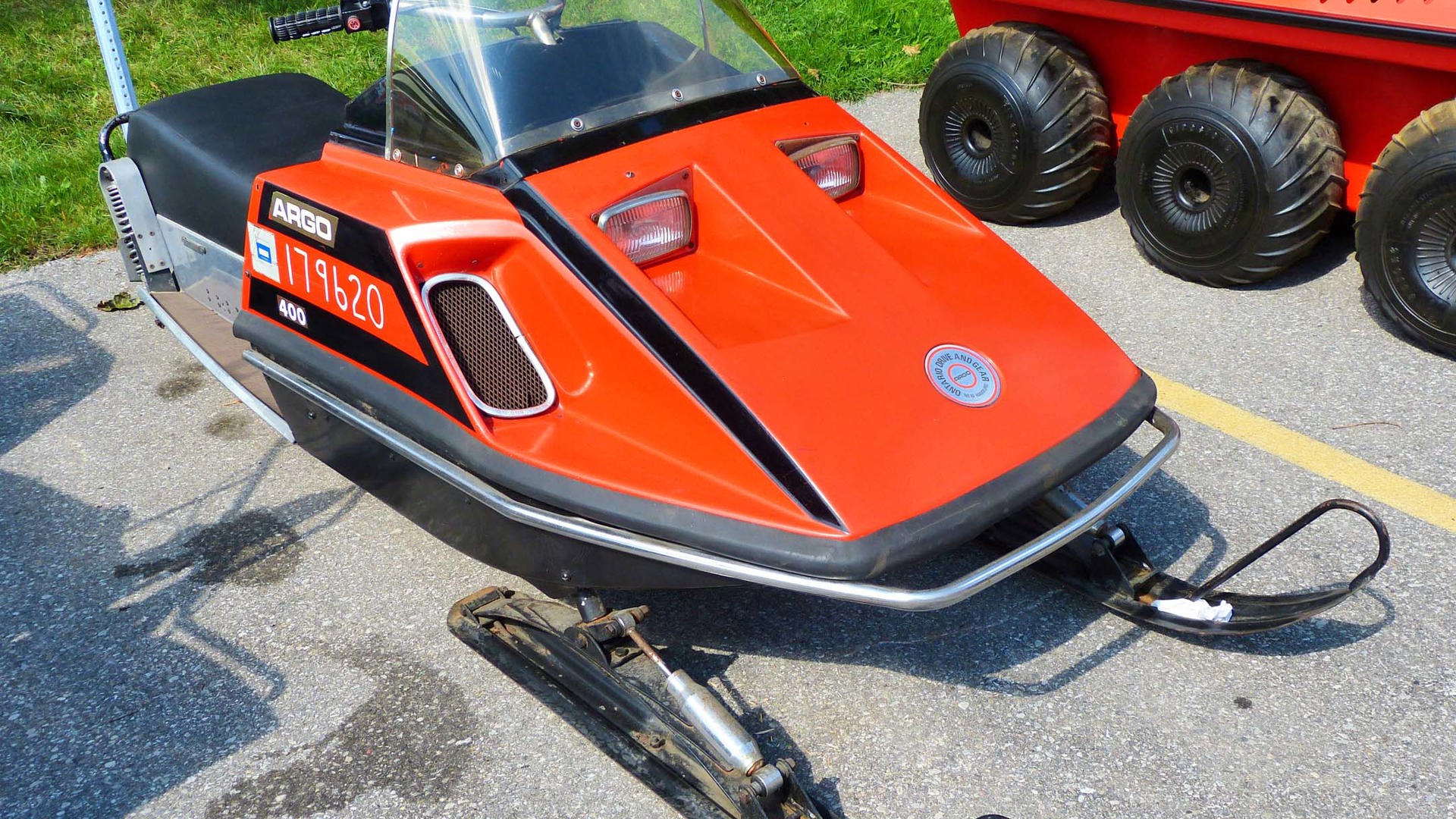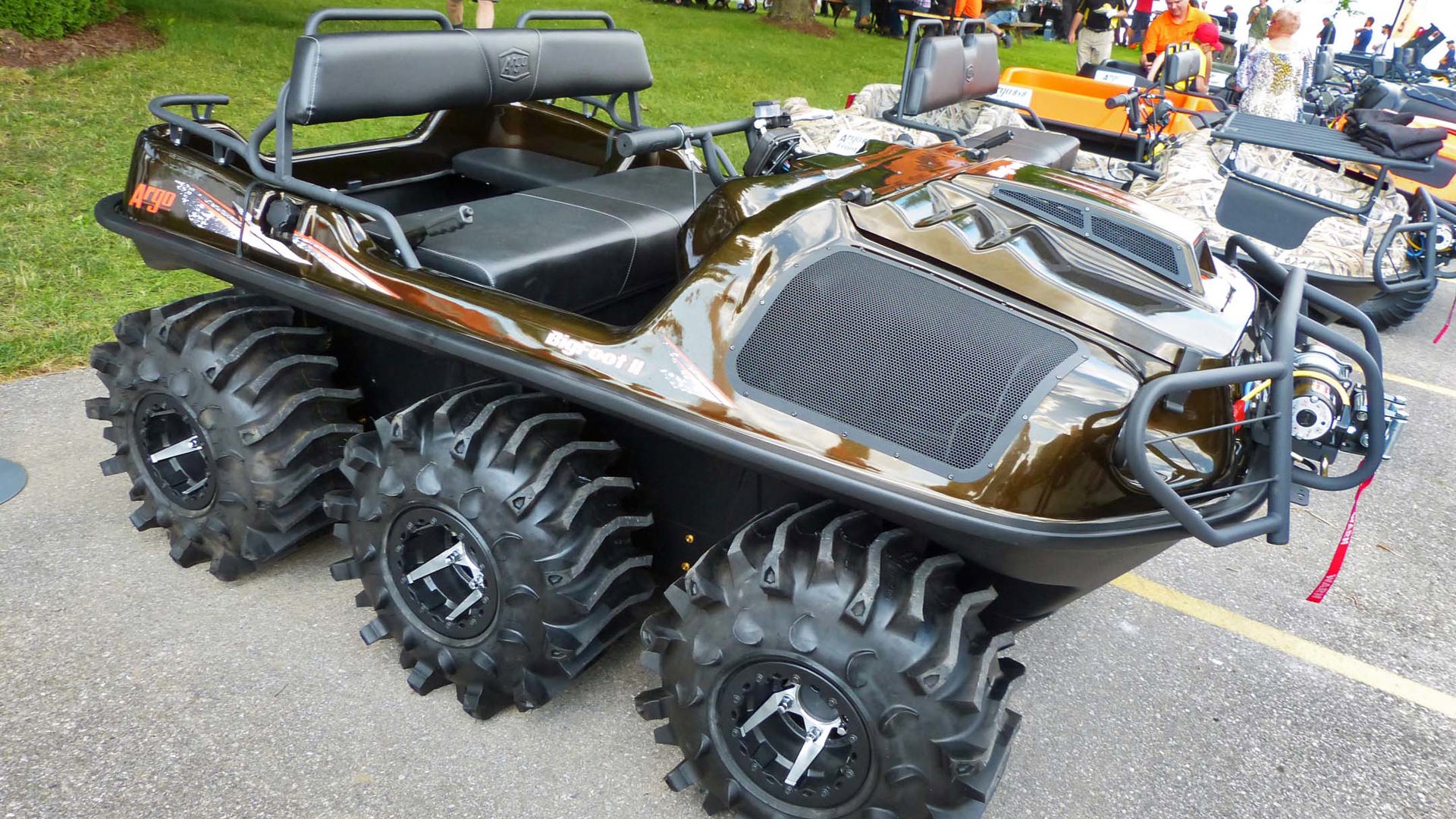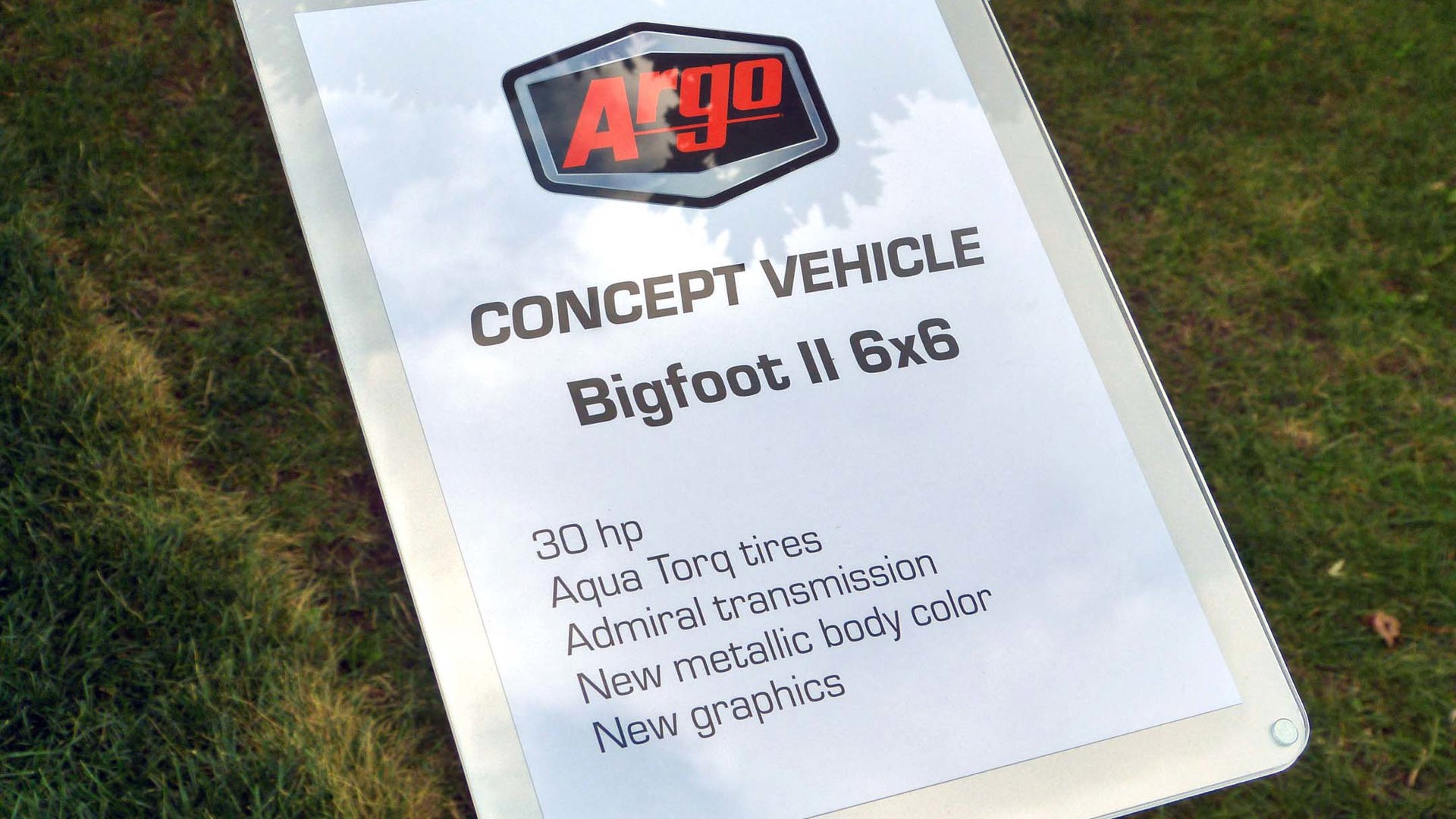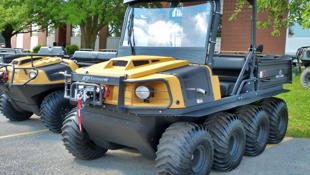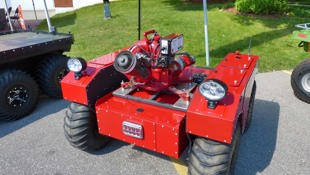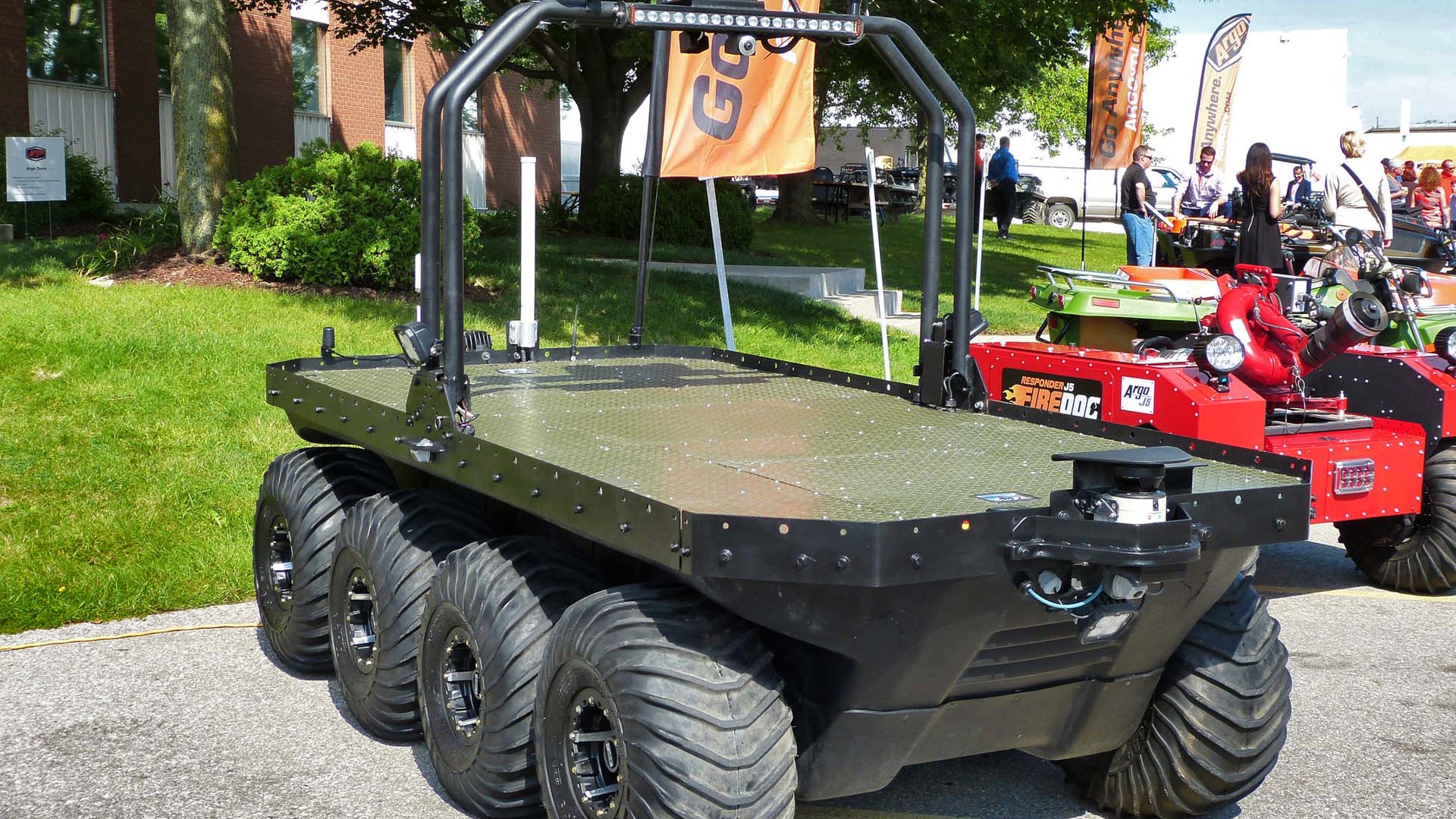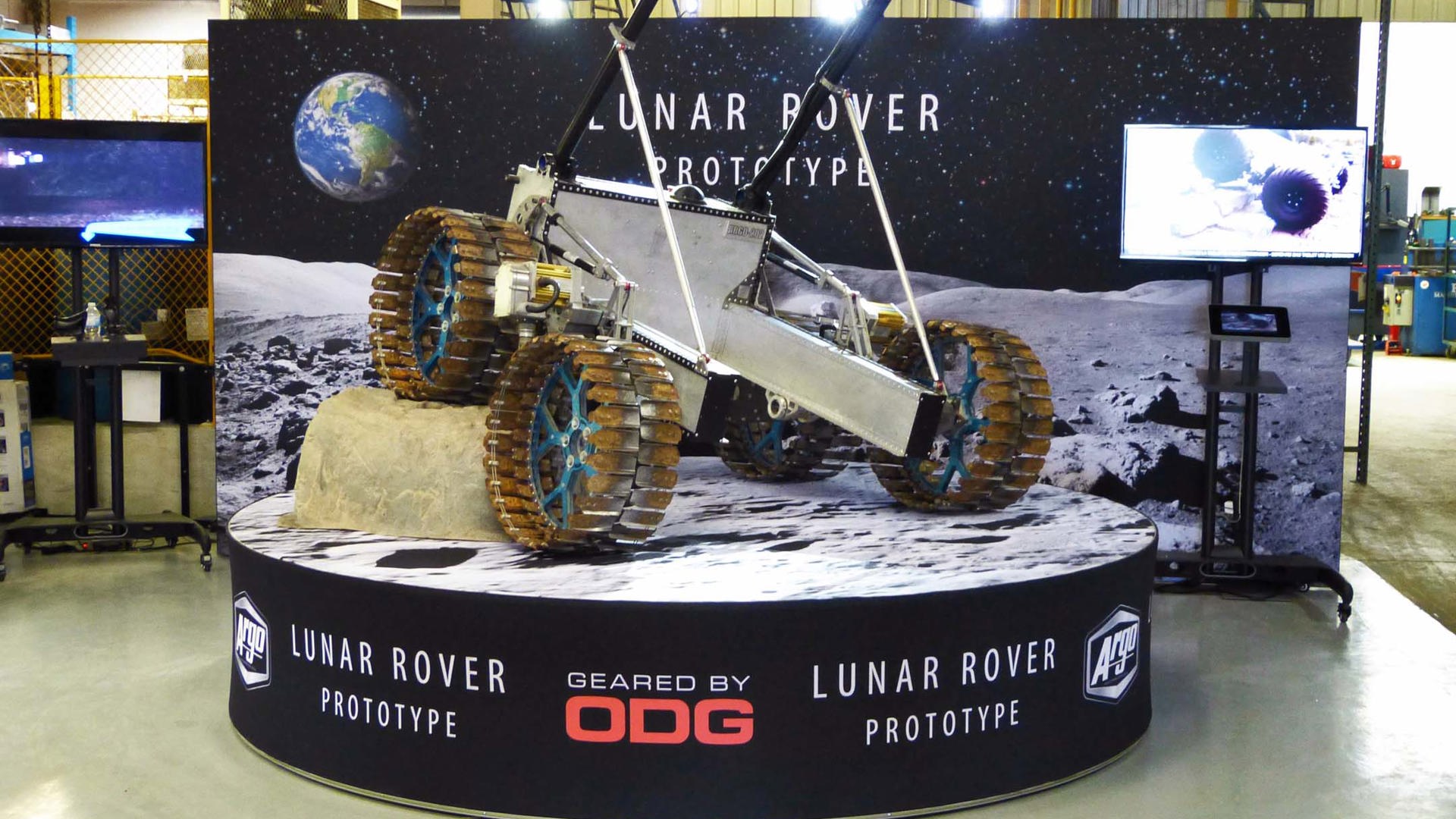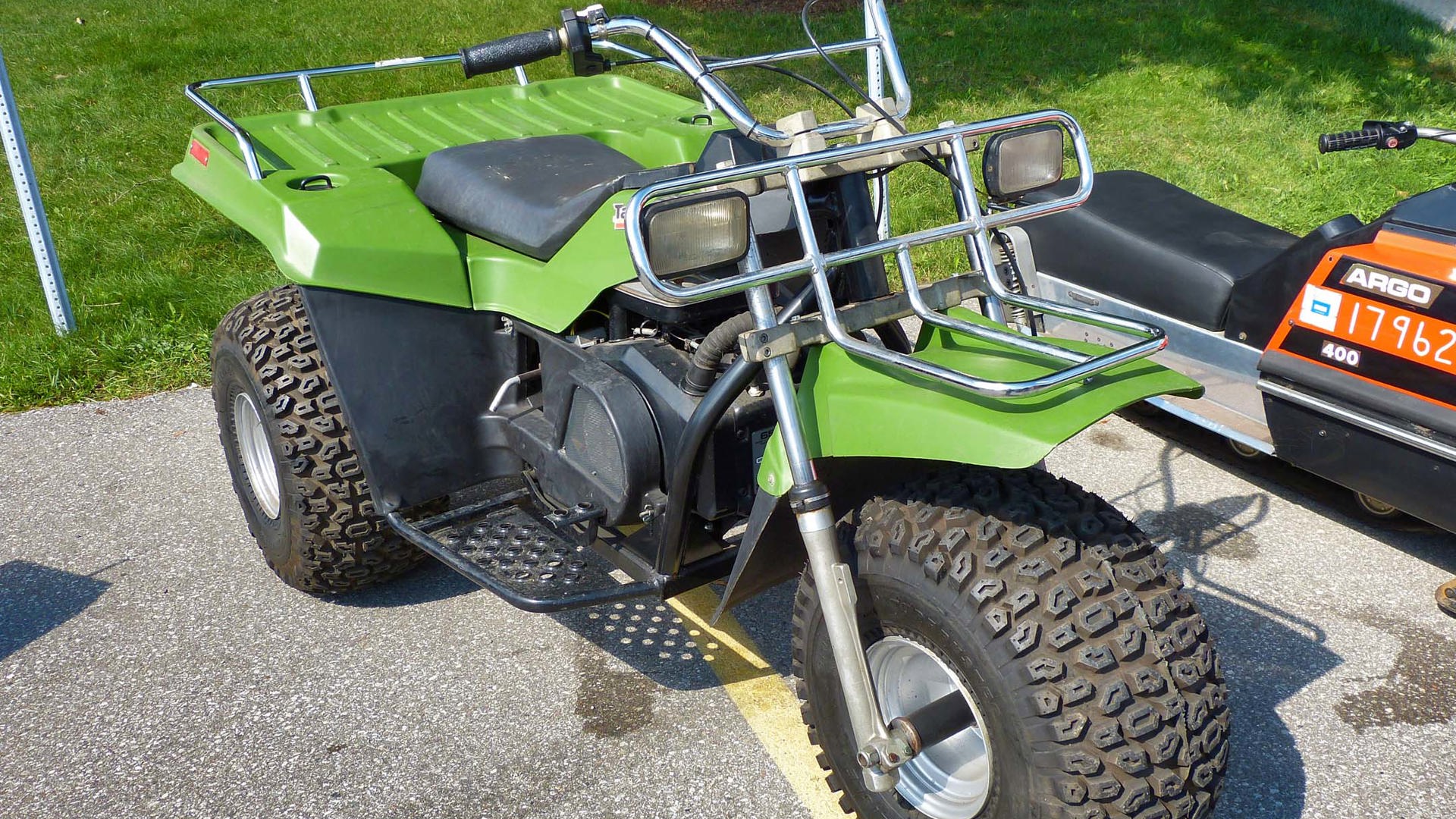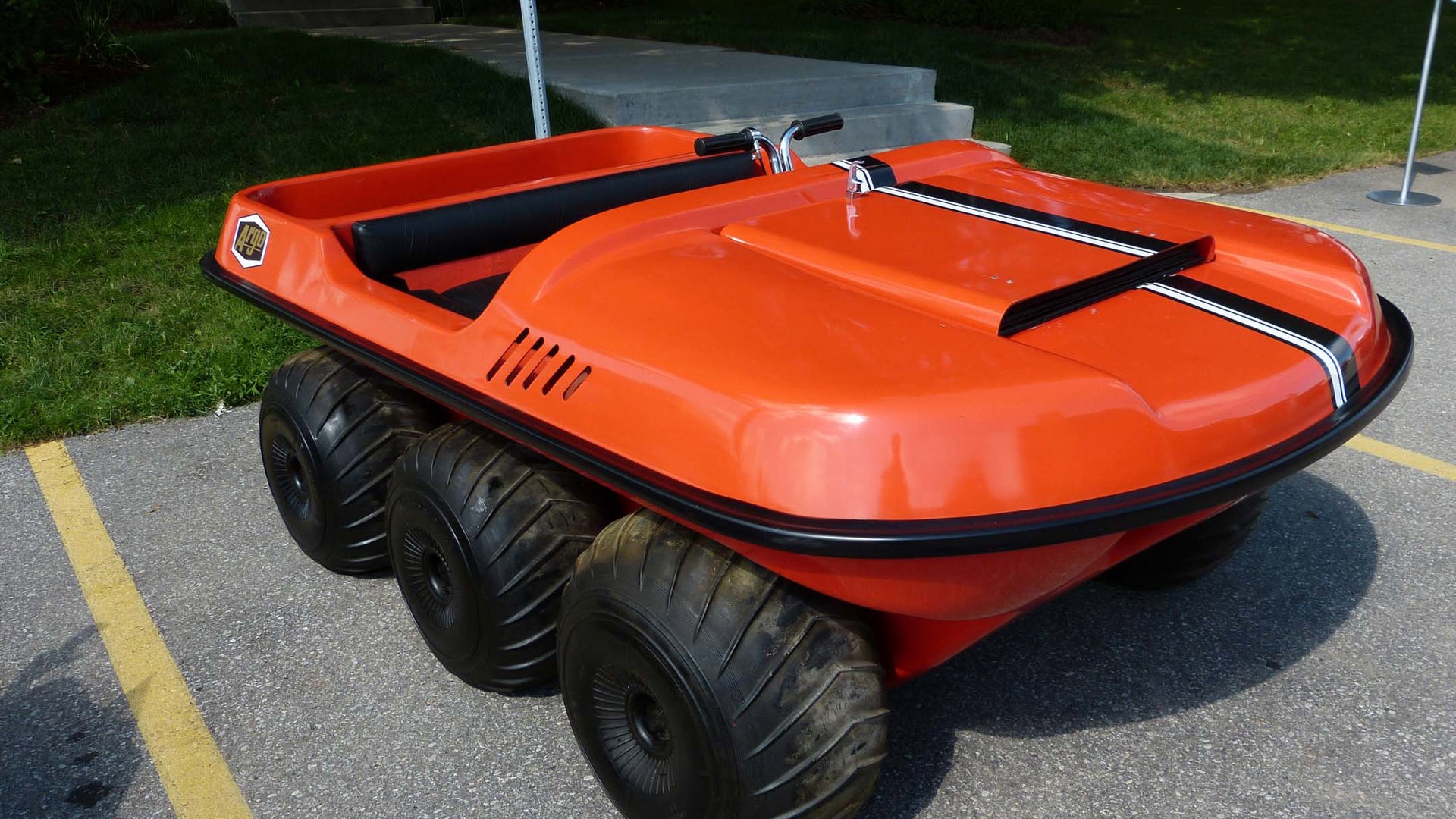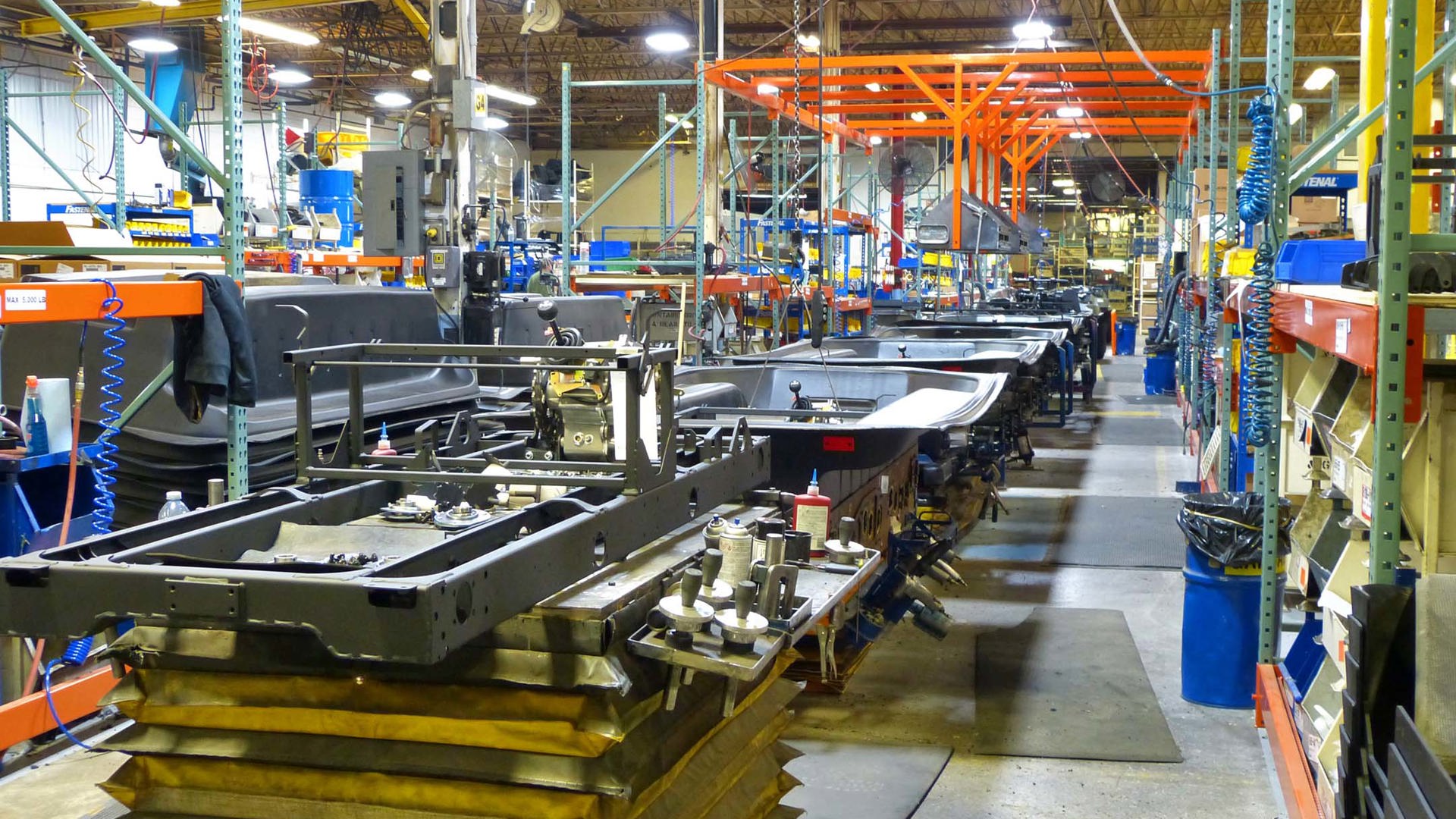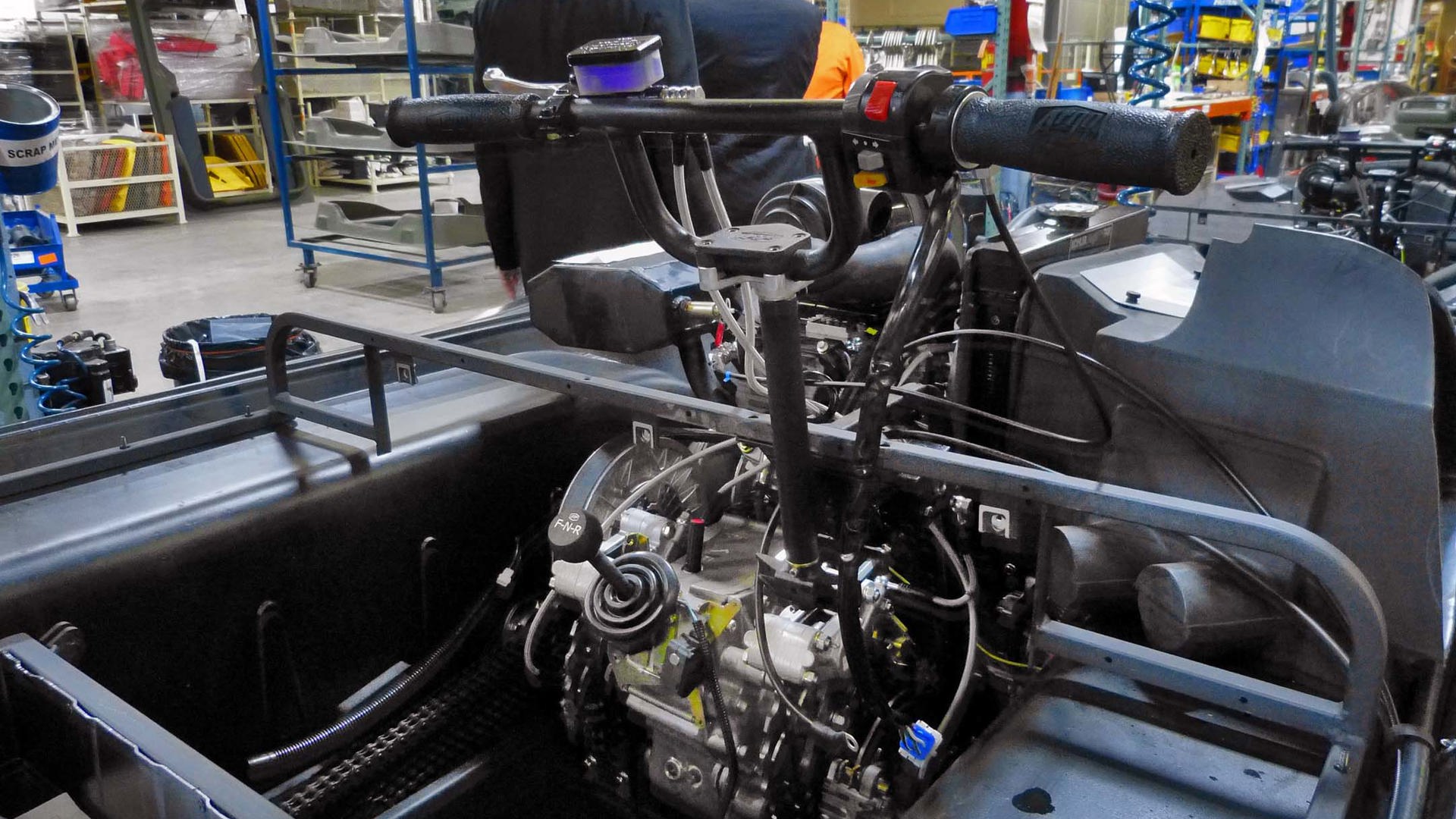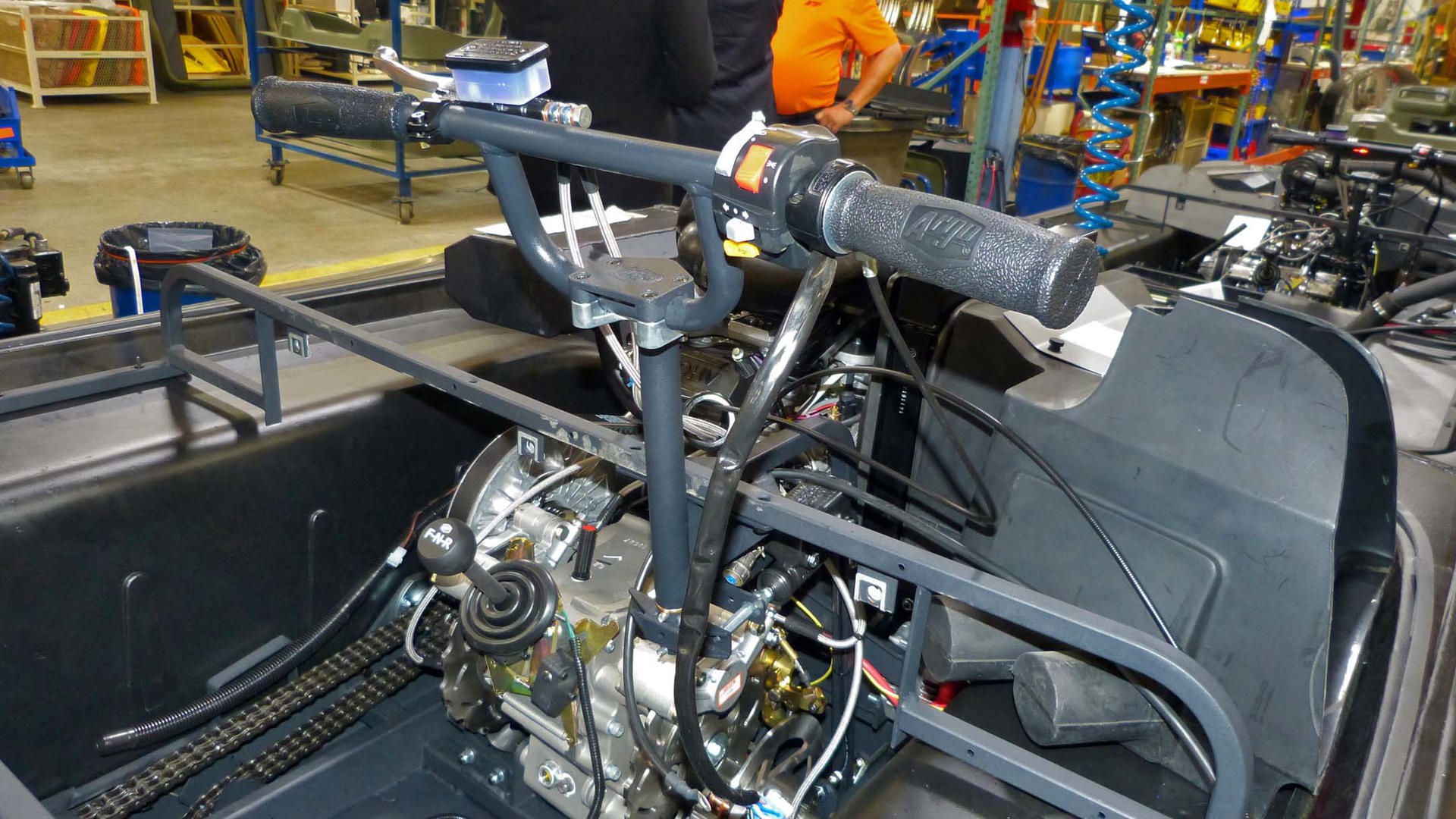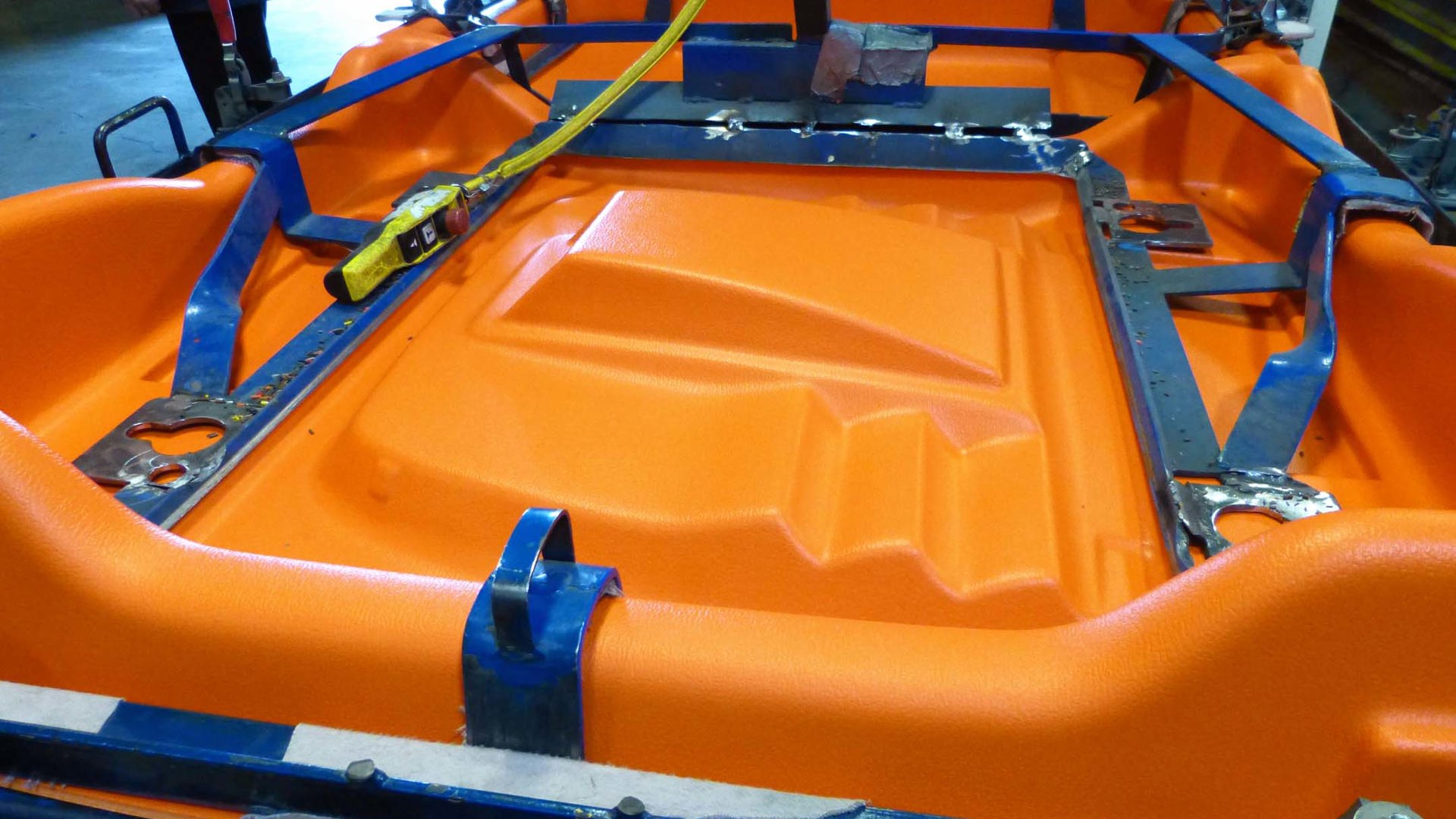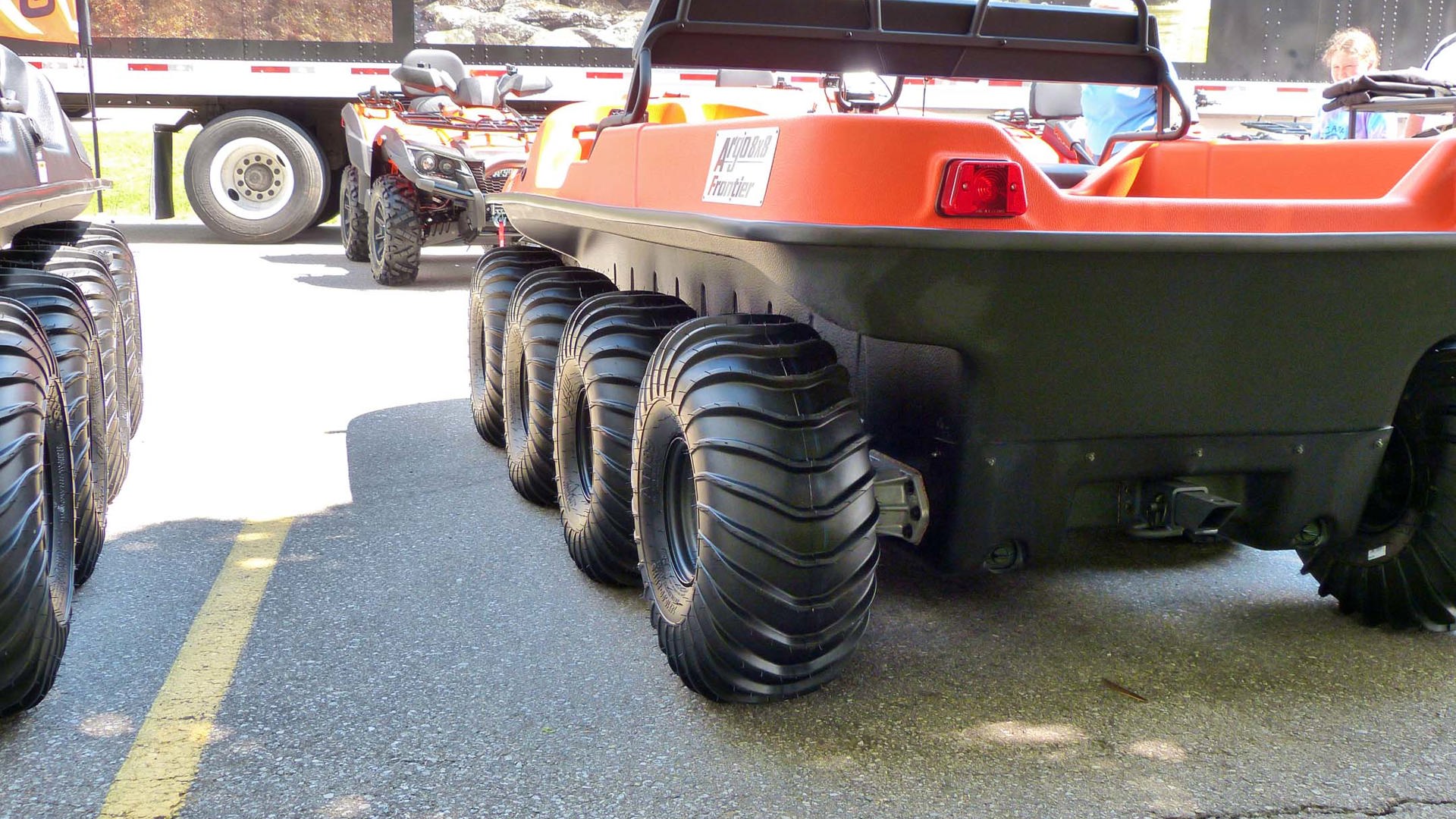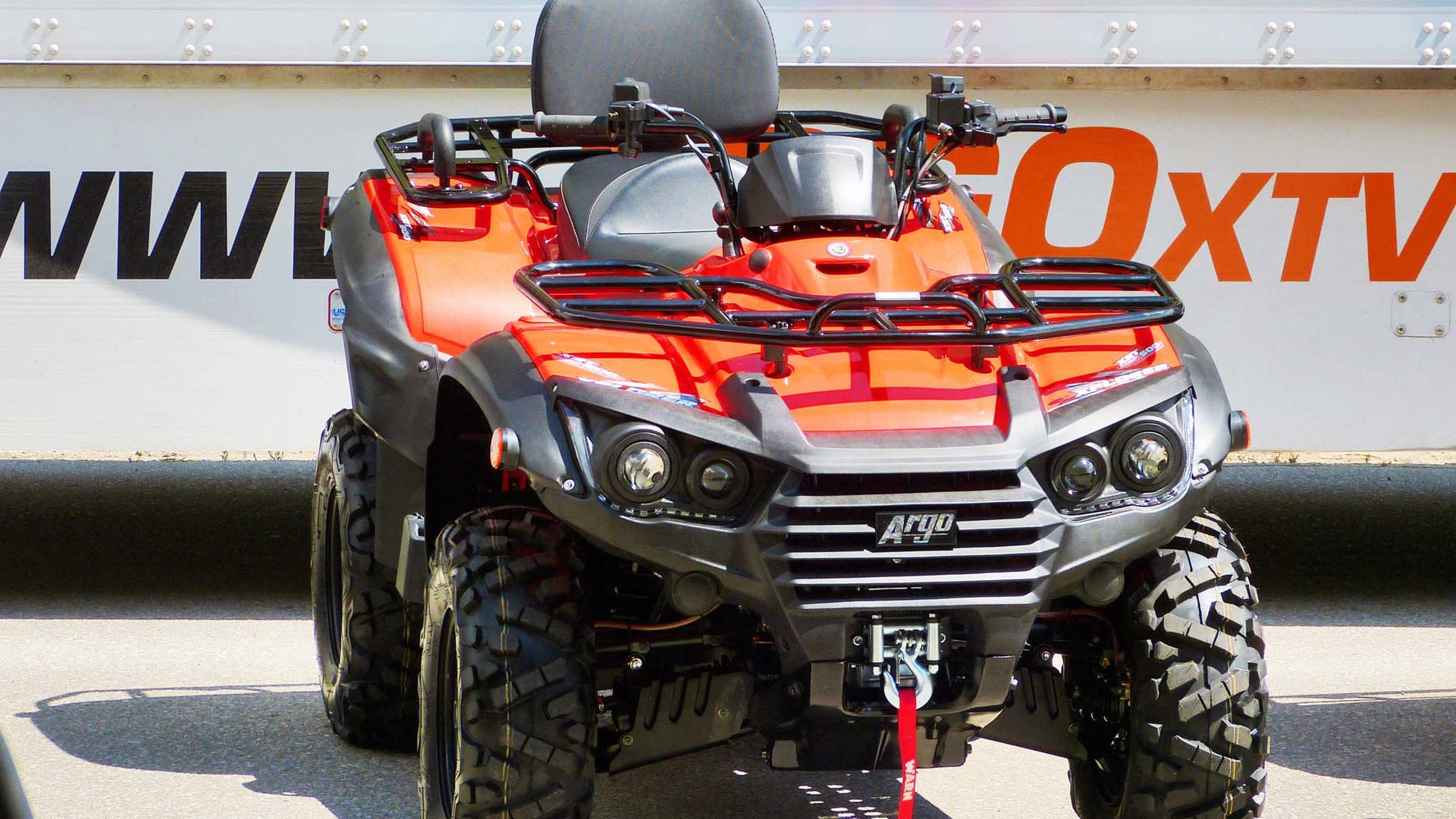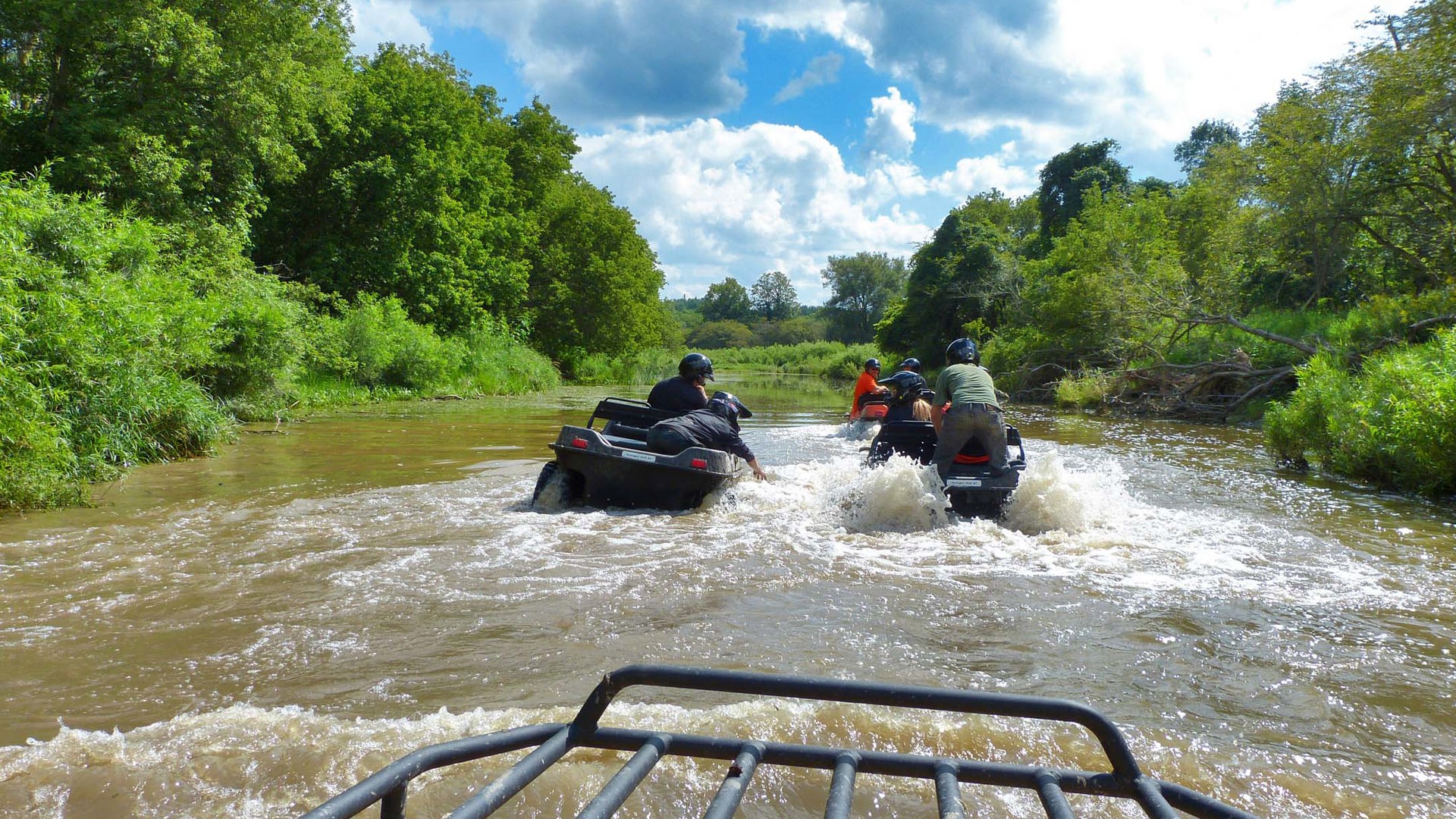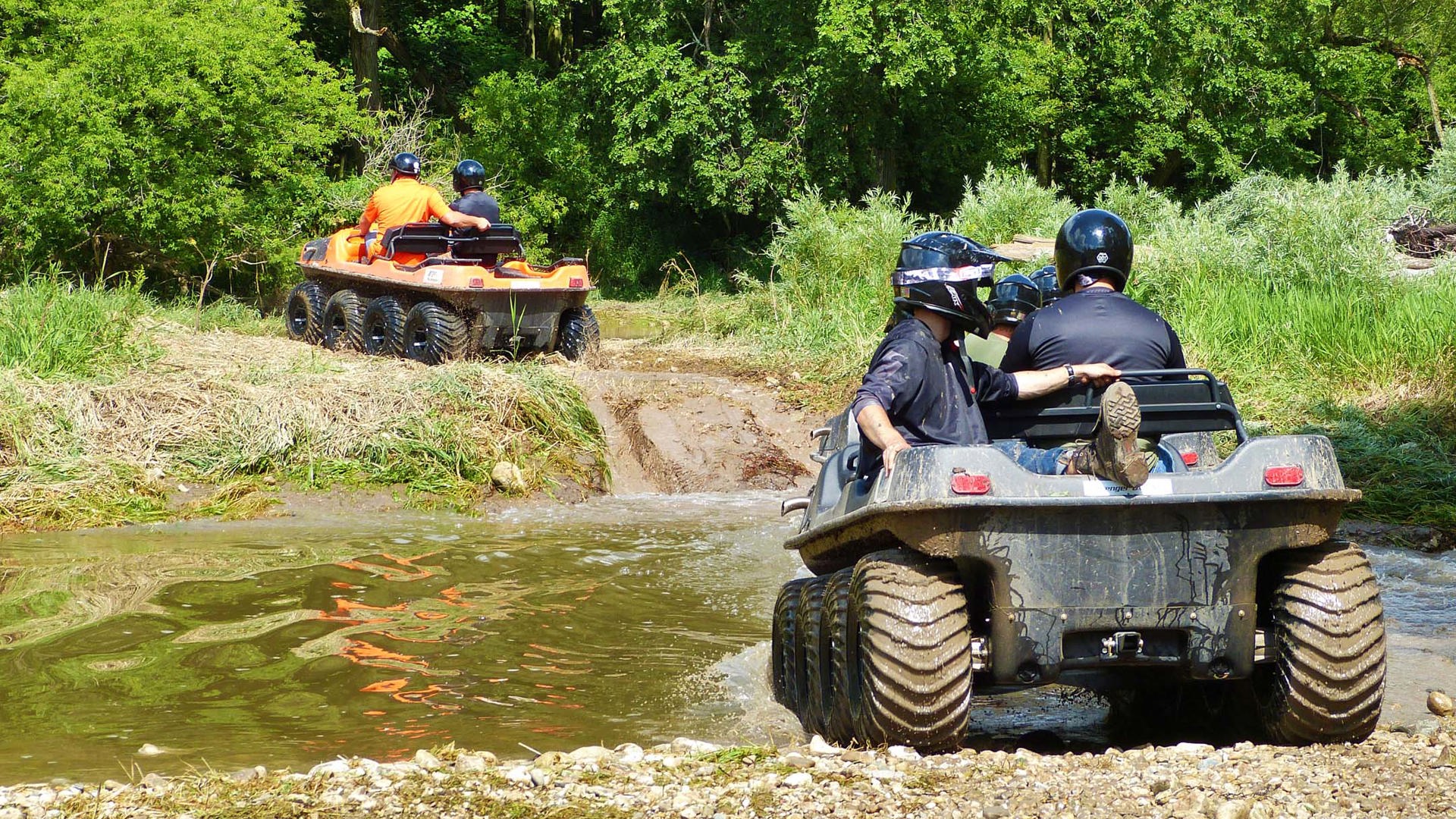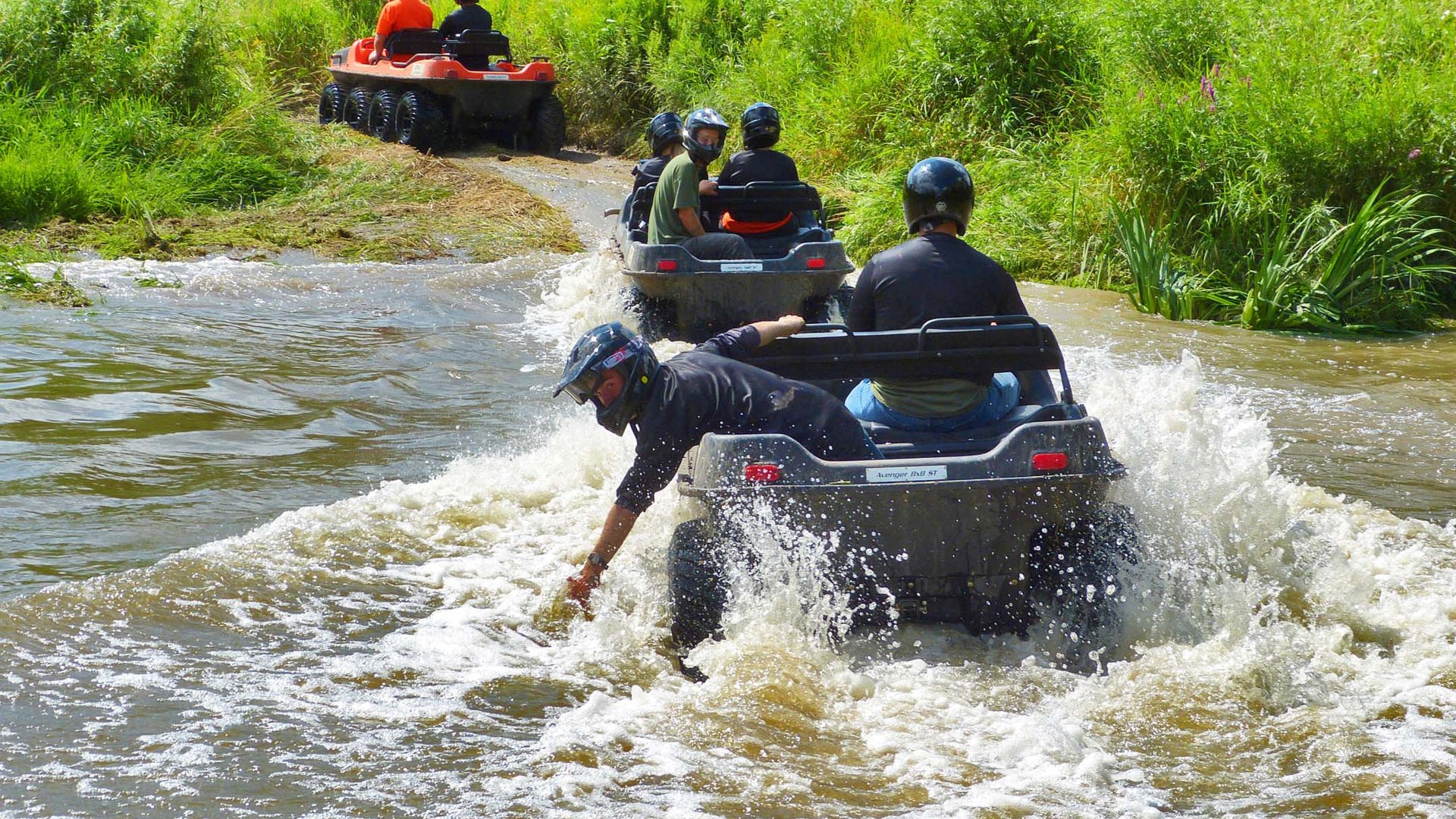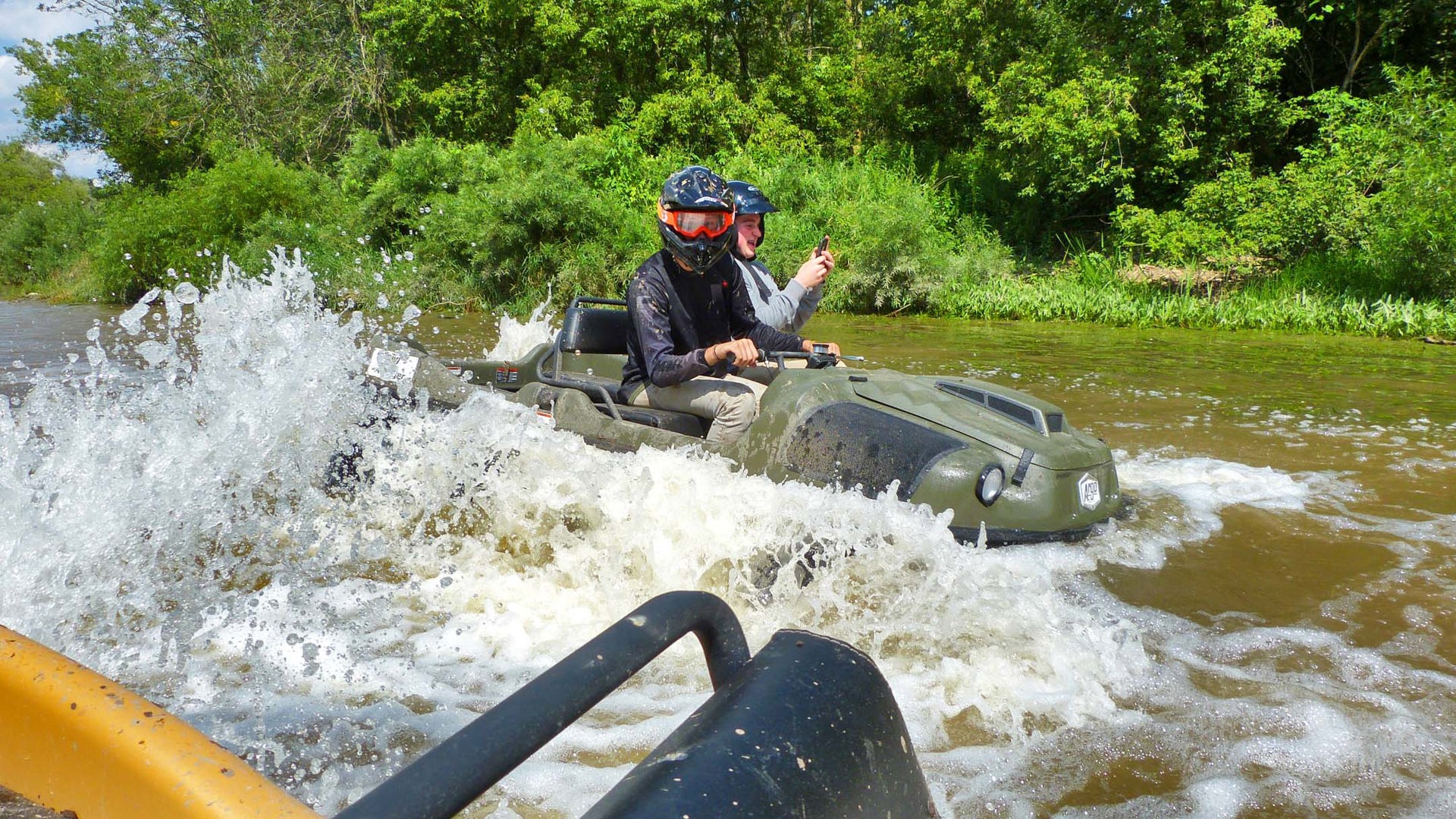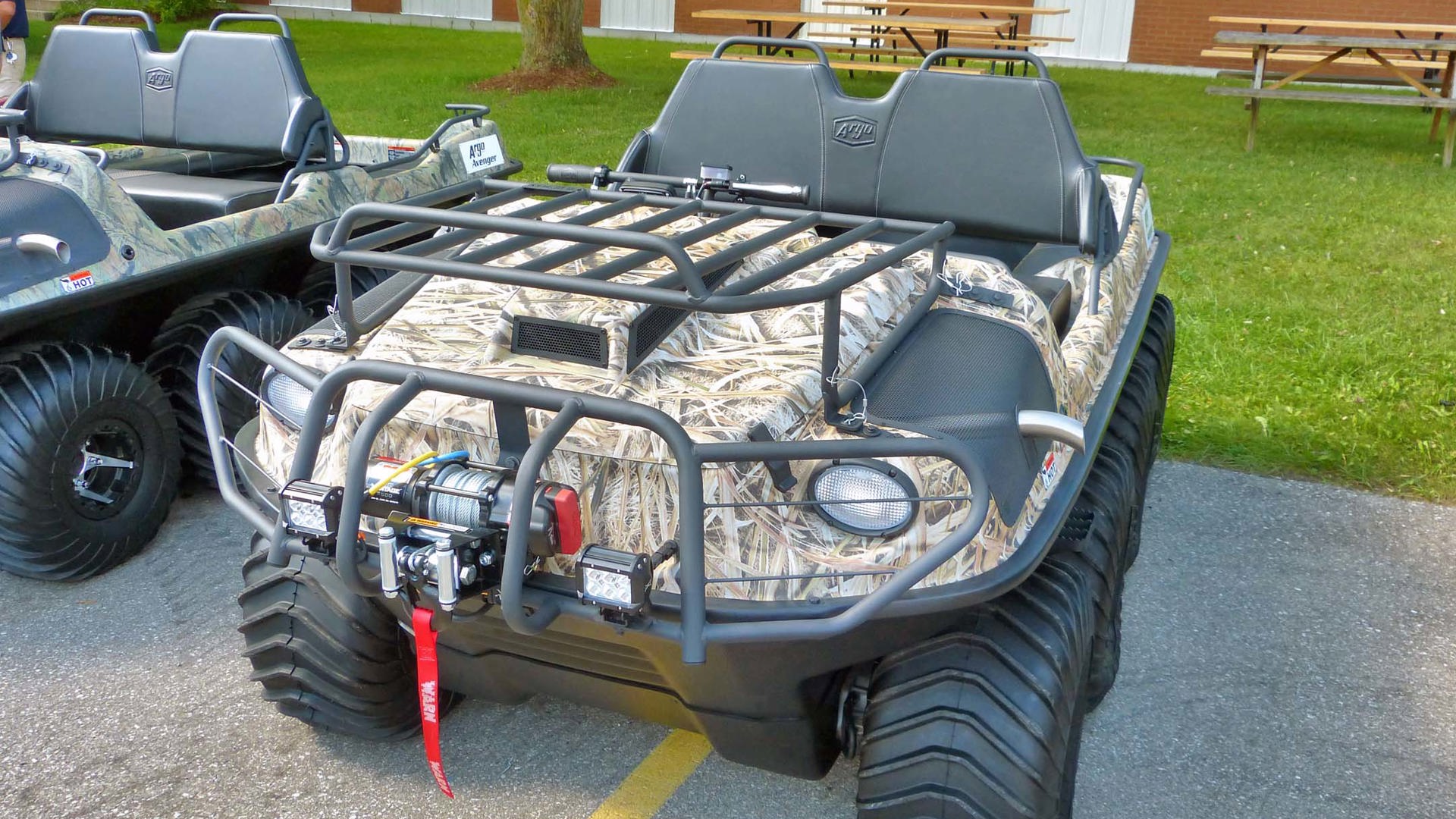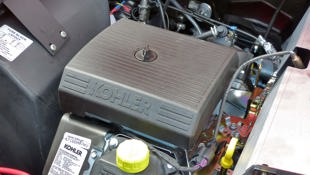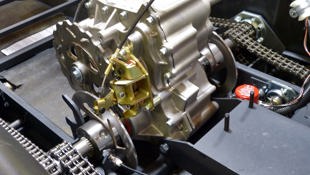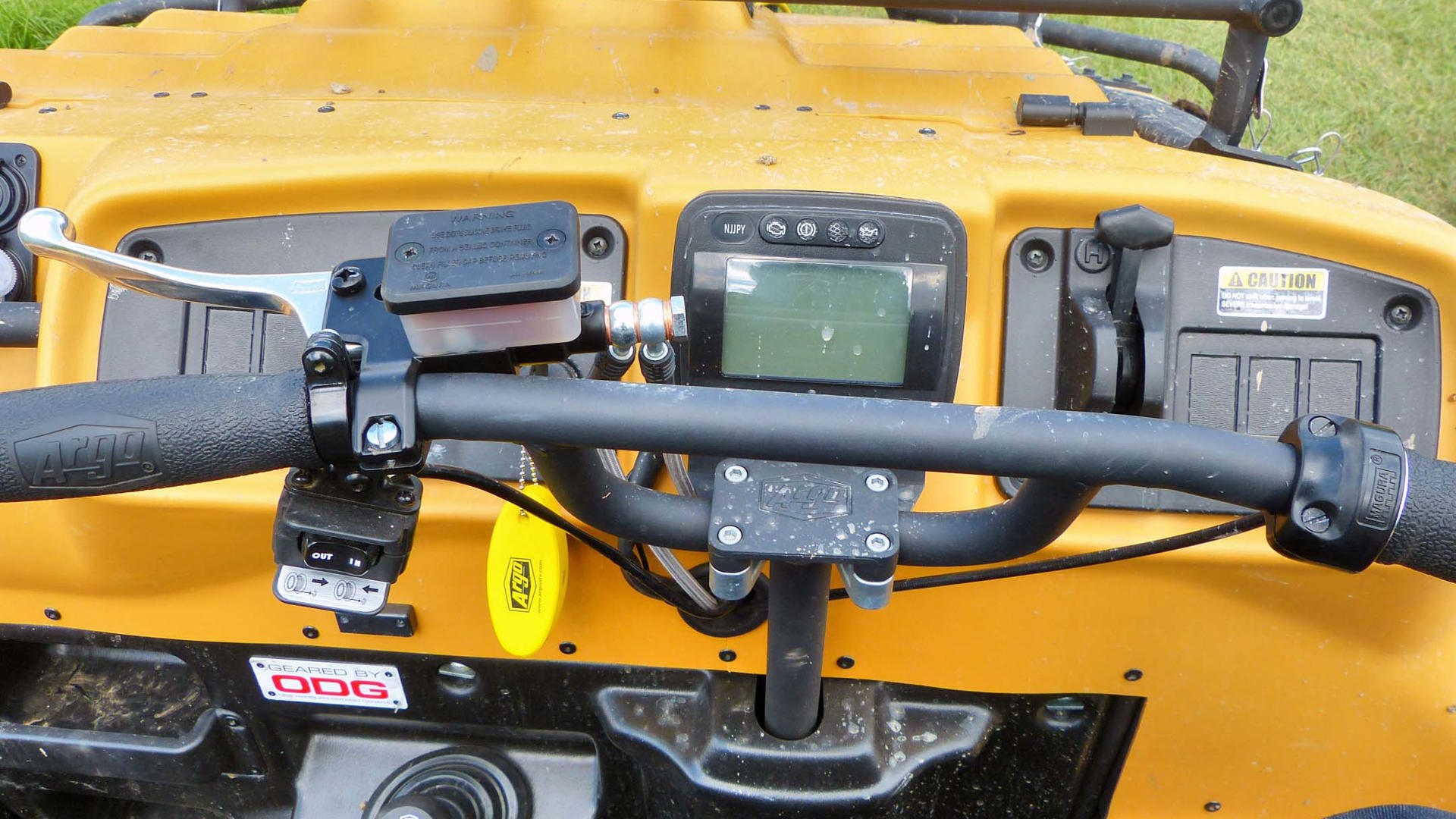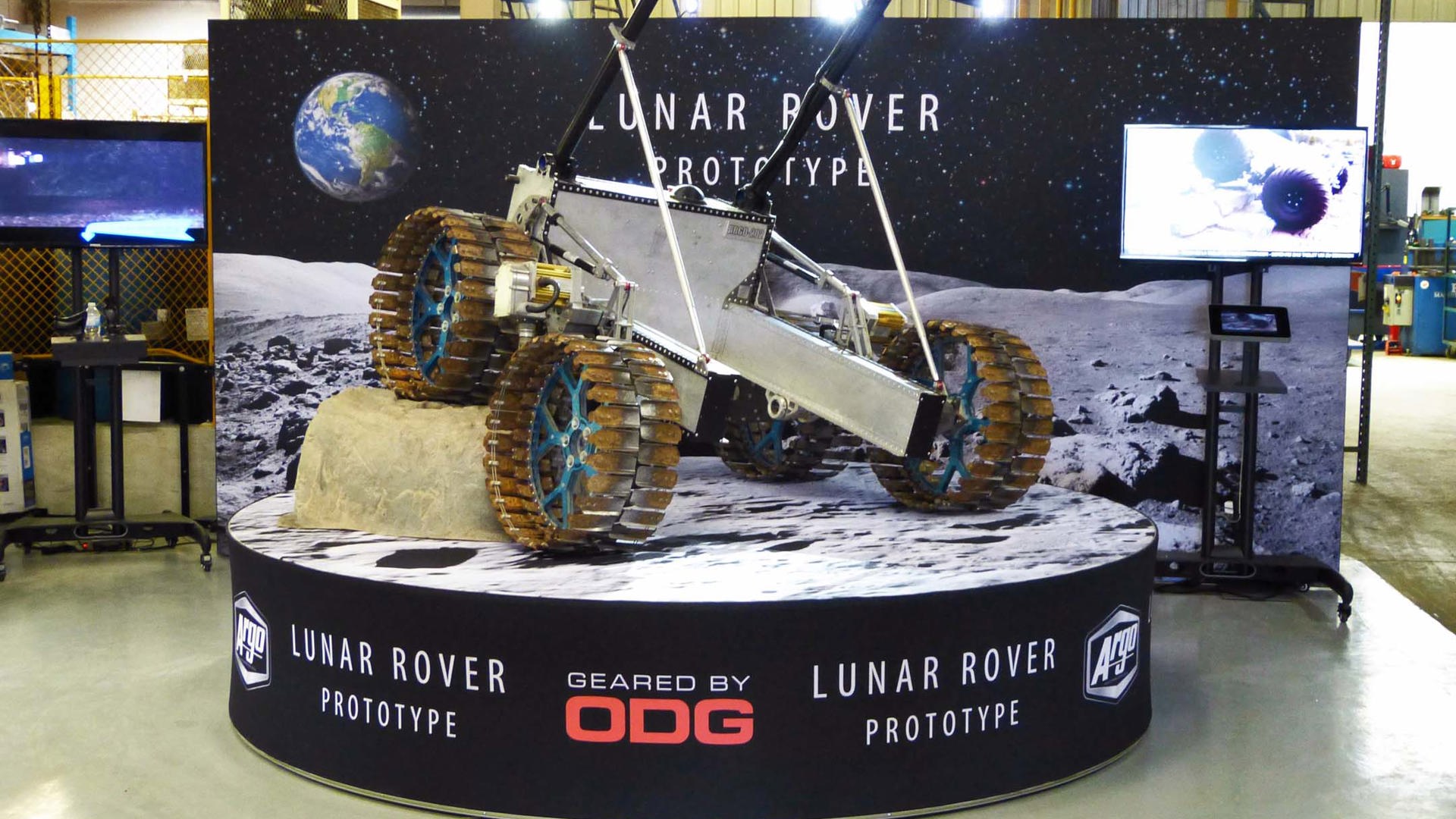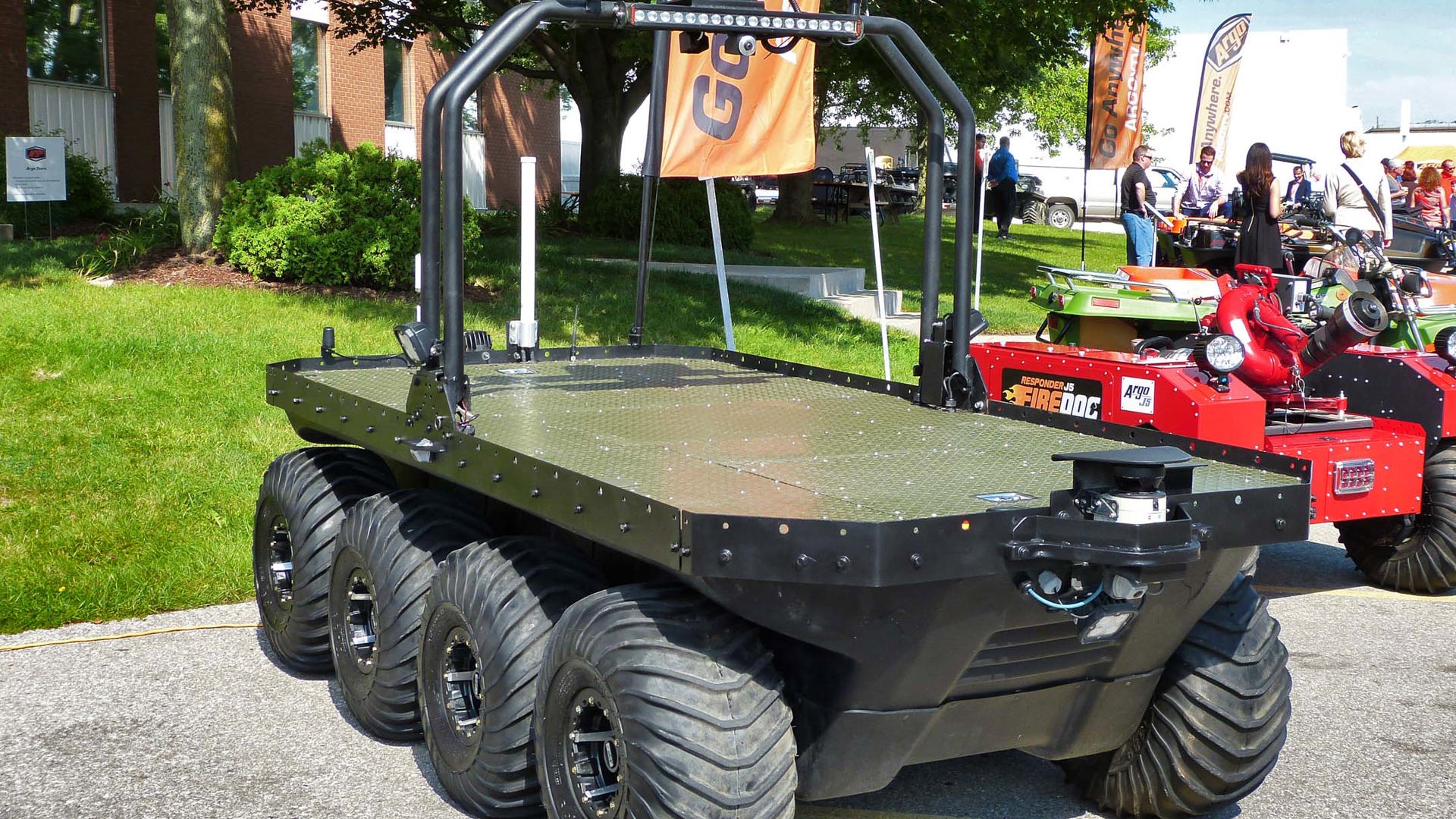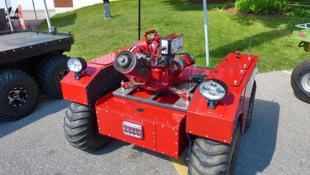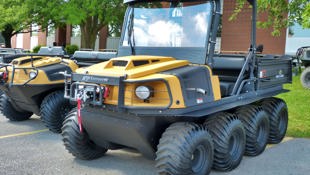“He’s being swept away by the river!” – I was worried, briefly, as the yellow eight-wheeled contraption in front of me suddenly turned hard left into the current. I had thought we’d be using these Argos to cross this river, it took a few moments to realize the driver had made the turn deliberately.
You can tow up to 544 kg with an Argo – and there is even a mobile ice-fishing hut available as an accessory.
The Avenger 8x8, like the entirety of the Argo Extreme Terrain Vehicle (XTV) lineup, is fully amphibious. It’s literally a boat on wheels, and the lead operator has pointed his unit down river. Our convoy of five units follows, hilariously splashing each other with every twist of the motorcycle-style throttle. The paddle-like tires churn furiously in the water.
This is not an efficient method of water propulsion, I should point out, but the Argo will get through water of infinite depth at a little over walking speed. Which is just as well, as the front-heavy Argo dips its nose in the water disconcertingly, making several in our group opt to put the passenger in the back to balance it out. With all that drag, the Argo makes an impressive wake for such a little unit.
Get to the river bank, and the Argo’s eight (or six depending on model) wheels all move in unison. A tank-style clutch and brake system steers the Argo, and the wheels can even be fitted with easily-removed tracks.
Want the tracks on? Lay them out, drive over them, wrap them around and secure the pull pin. Want them off? Pull the pin, drive off the tracks. Voila! Argo says about 70 percent of buyers actually purchase the optional track system.
For our test, we were aboard Avenger 8x8 models. There are Argo’s volume sellers and make up the majority of the 2,400 units the Canadian company sells each year. Plans are afoot to expand that, with a target of 5,000 units sold annually by 2020.
How They Work
Since the first one rolled out of the New Hamburg, Ontario, factory 50 years ago, the Argo has been powered by Kohler engines. In 2018, the Avenger 8x8 is powered by a 747cc V-twin good for 30 hp and what Argo says is “massive torque” – though exact figures were not forthcoming. There are 23 hp air-cooled variants available in lower-trim models.
This Avenger unit is liquid-cooled, and sends its power through a proprietary transmission developed by parent company, Ontario Drive and Gears. An automatic transmission with a chain final drive to all eight wheels, clutches at each wheel allow torque to be fed to the wheel which most needs it at any time, to help the 8x8 extract itself from almost anywhere.
There are no steering knuckles, no steering box, and the wheels don’t turn side-to-side like in a car (or on an ATV) – they roll forward, or backward, and nothing more. There is no suspension either, which makes for a jolty and energetic ride. Ground clearance is 240 mm, but the Argo can clamber over most obstacles. There’s no articulation, because no suspension, so it’s not uncommon to see an Argo waving several of its wheels in the air.
Steering is accomplished via a type of tiller. It resembles motorcycle handlebars set close together, with a throttle grip on the right. The “tiller” actuates a hydraulic master cylinder which brakes the left or right side, depending on the direction you want to turn. This means the Argo can spin in its own length, and makes for an interesting, herky-jerky style of steering out on the trails.
It takes a while to get used to, and the limited range of movement in the tiller means you have to be ultra-precise with your inputs, but after 15 minutes or so I found I could steer accurately and smoothly. This was necessary, because the Argo testing trails thread through heavily wooded forest, complete with mud, clay, rocks, and more. Not to mention the multiple steep-banked river crossings, and our eye-opening jaunt downstream.
You wouldn’t buy one of these for its speed, (it will do 40 km/h on land or 5 km/h on water) but rather for its capability. In North America, these rigs are adored by hunters, and they’re particularly popular in the swamps and wetlands of Florida, where a boat or an ATV are only good for small sections of the terrain at any given time. The Argo is rated for temperatures ranging from 40 degrees below to 40 degrees over zero Celcius, and commercial versions do service in the Arctic for both governments and private companies.
Payloads vary from 290 kg for the Frontier 6x6 to 540 kg for the Conquest 8x8. That’s land-based, mind you, you’d better not drive into a river fully laden, as the rating on water drops to 200 kg at the low end and 313 kg at the high end. You can tow up to 544 kg with an Argo – and there is even a mobile ice-fishing hut available as an accessory – but I wouldn’t try to tow on water.
Commercial series Argos are more robust, and there are even autonomous units and remote control units for mining and search and rescue. Argo has even designed a moon rover for a possible 2020 mission.
Pricing: 2018 Argo XTV Lineup
Frontier 6x6 Series
Frontier 6x6 SE: $12,999
Frontier 6x6 Scout S: $16,499
Frontier 6x6 ST Limited: $18,499
plus $650 freight and PDI
Frontier 8x8 Series
Frontier 8x8 S: $17,999
Frontier 8x8 Scout S: $20,599
Frontier 8x8 S in Limited Green, Orange: $19,999
plus $800 freight and PDI
Avenger Series
Avenger 8x8 ST: $25,999
Avenger 8x8 STR: $27,999
Avenger 8x8 ST Limited: $27,999
Avenger 8x8 LX: $28,999
Avenger 8x8 Hunt Master: $28,499
Avenger 8x8 Hunt Master R: $29,999
plus $800 freight and PDI
Conquest Series
Conquest 8x8 Outfitter: $37,999
plus $900 freight and PDI
Commercial Series
Avenger 8x8 Responder: $28,499 plus $800 freight and PDI
Avenger 8x8 XT: $29,499 plus $800 freight and PDI
Conquest 8x8 XT: $35,499 plus $900 freight and PDI
Conquest 8x8 XT Diesel: $41,999 plus $900 freight and PDI
Conquest 8x8 XT-X: $45,999 plus $1,100 freight and PDI
